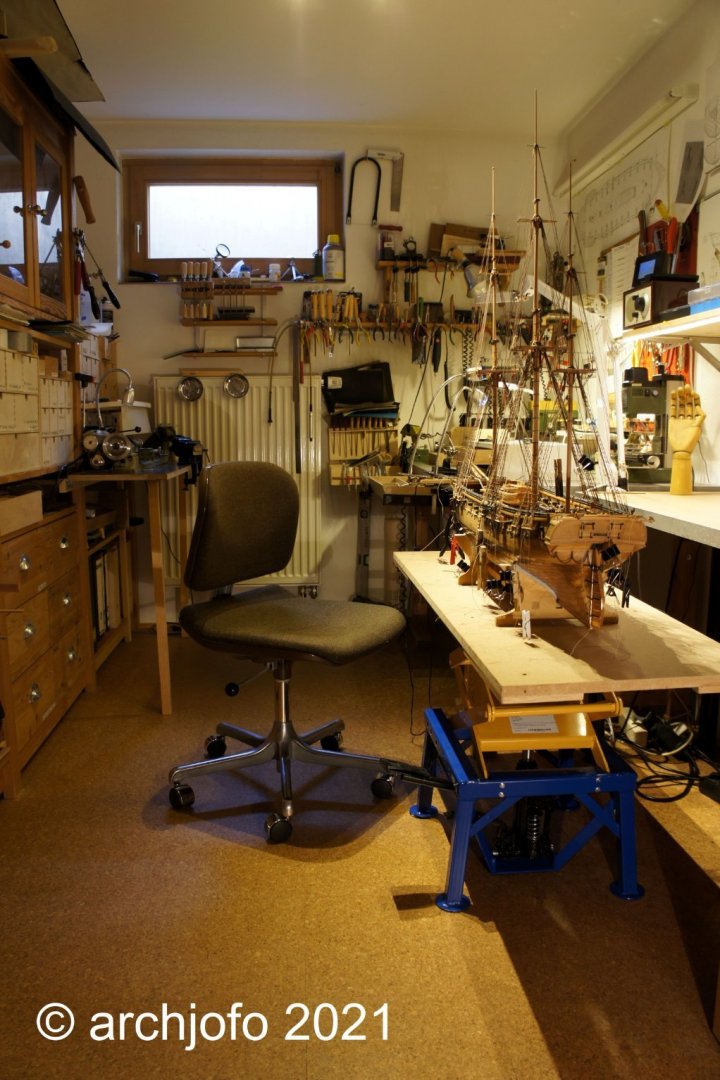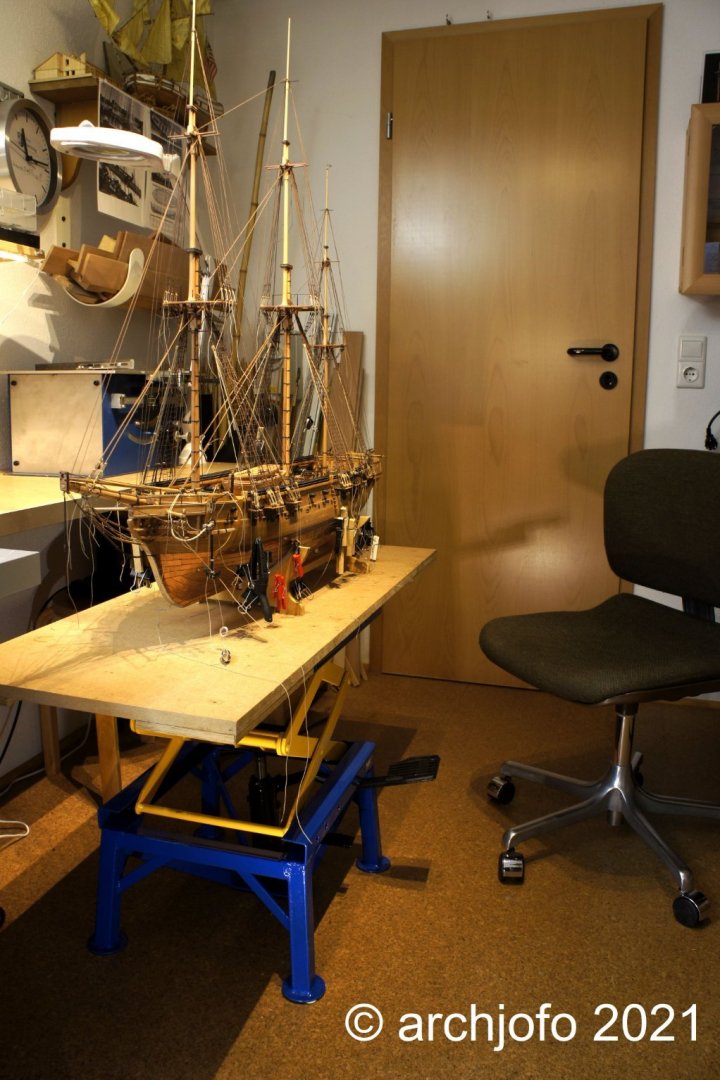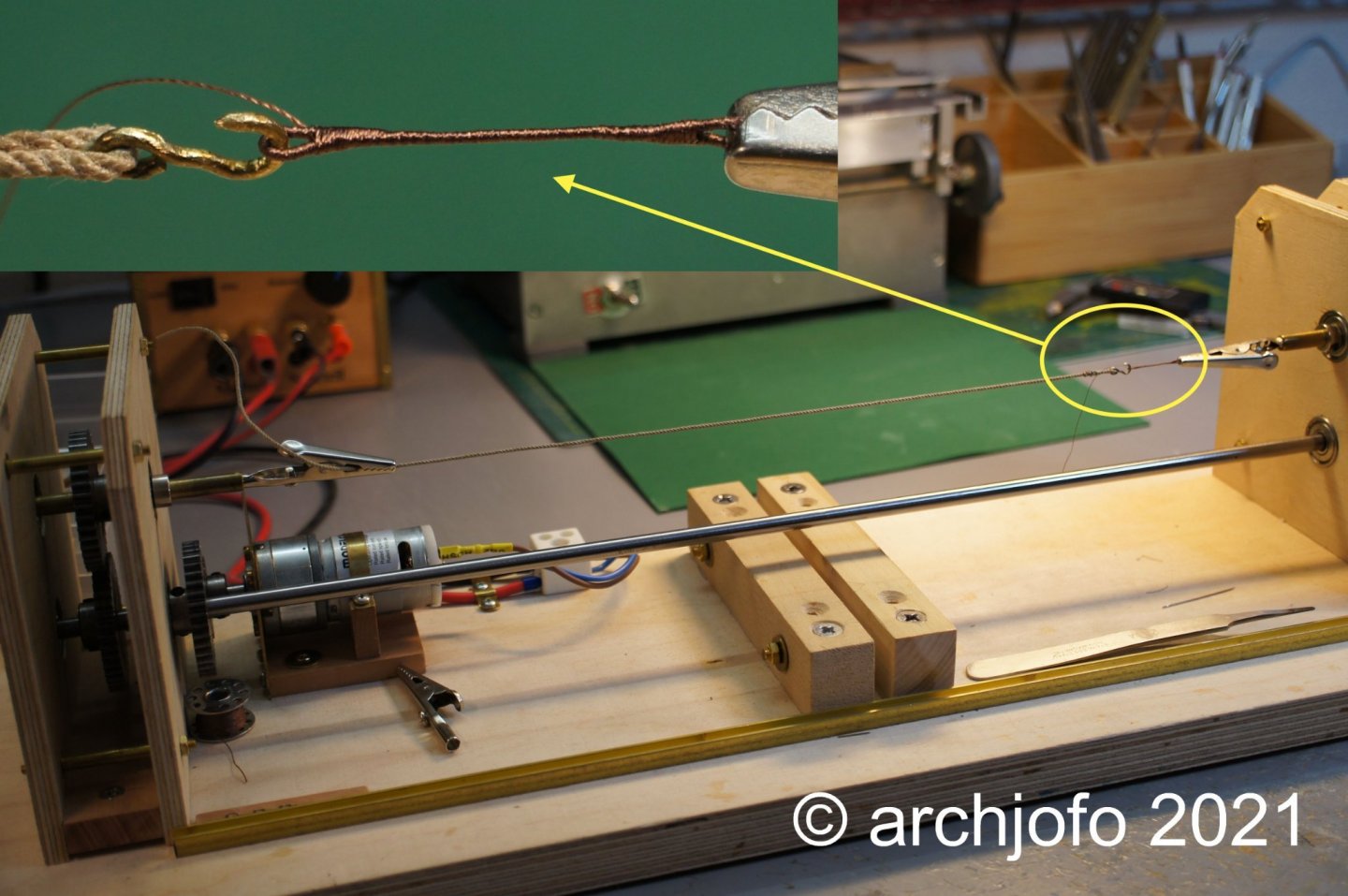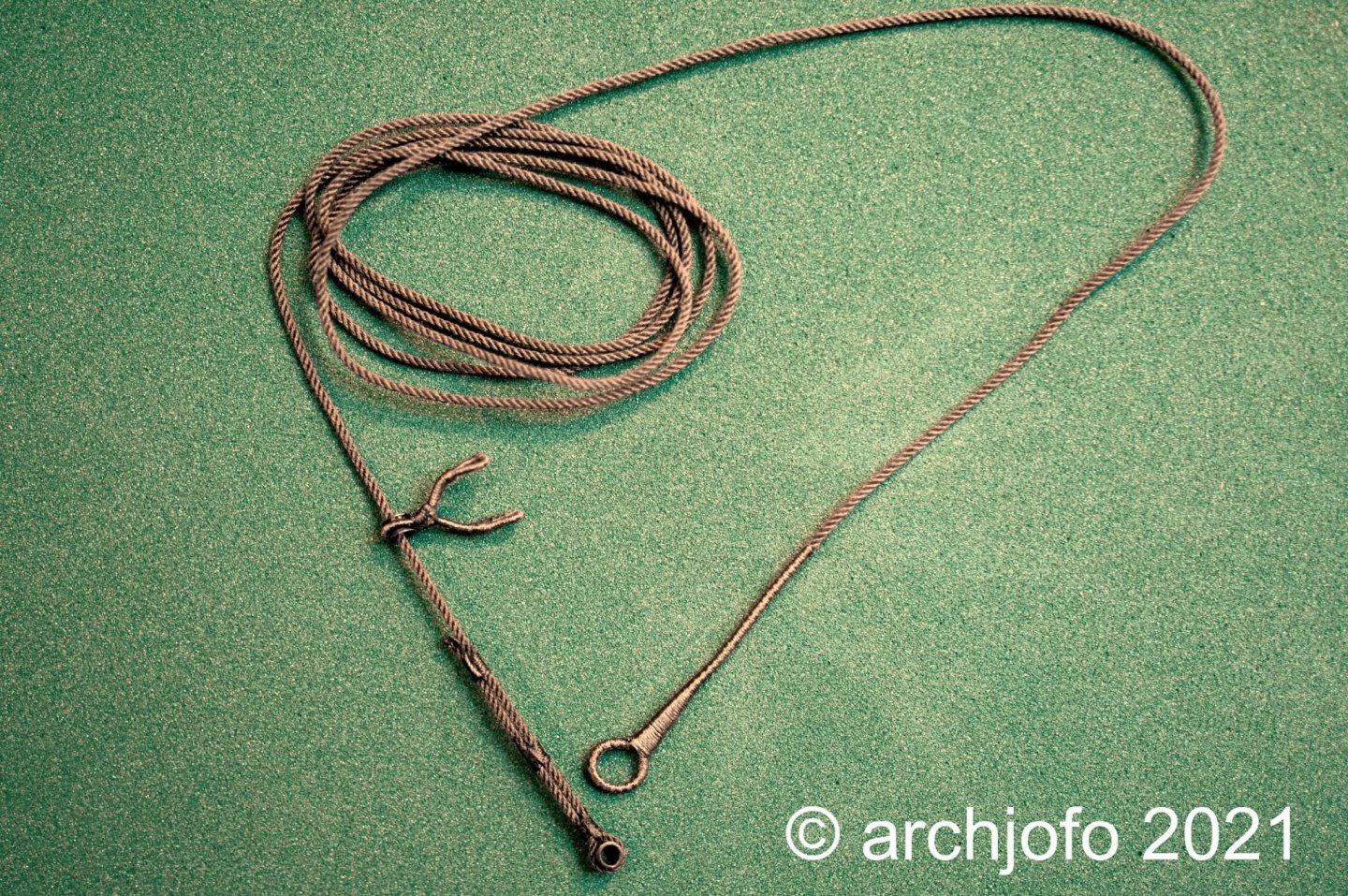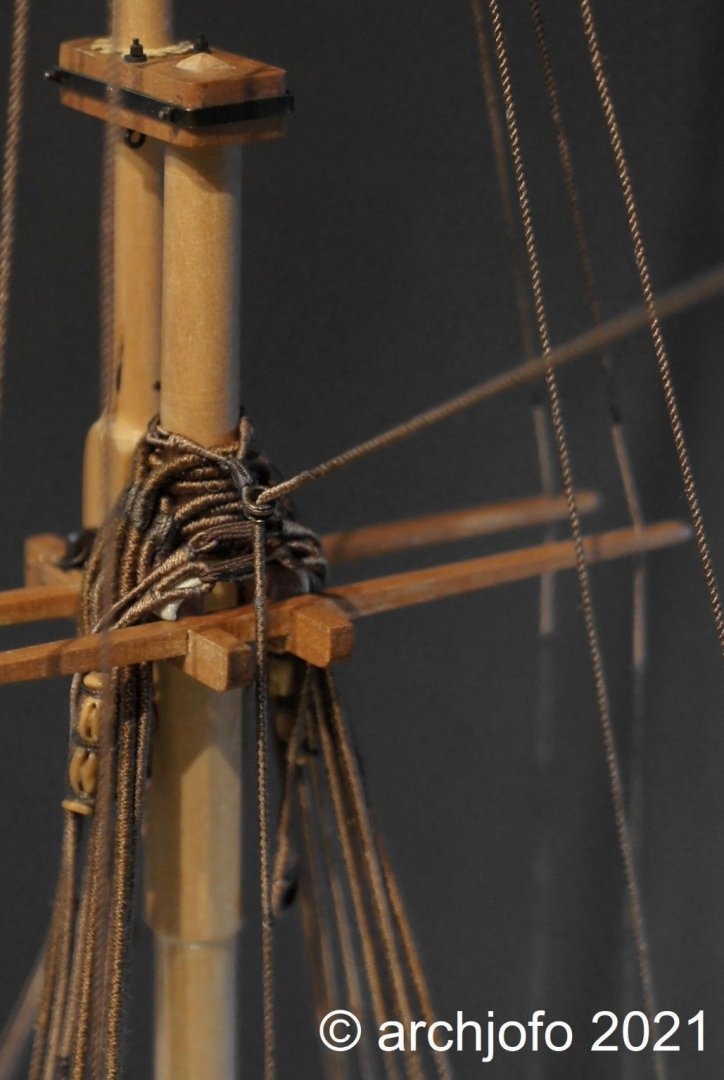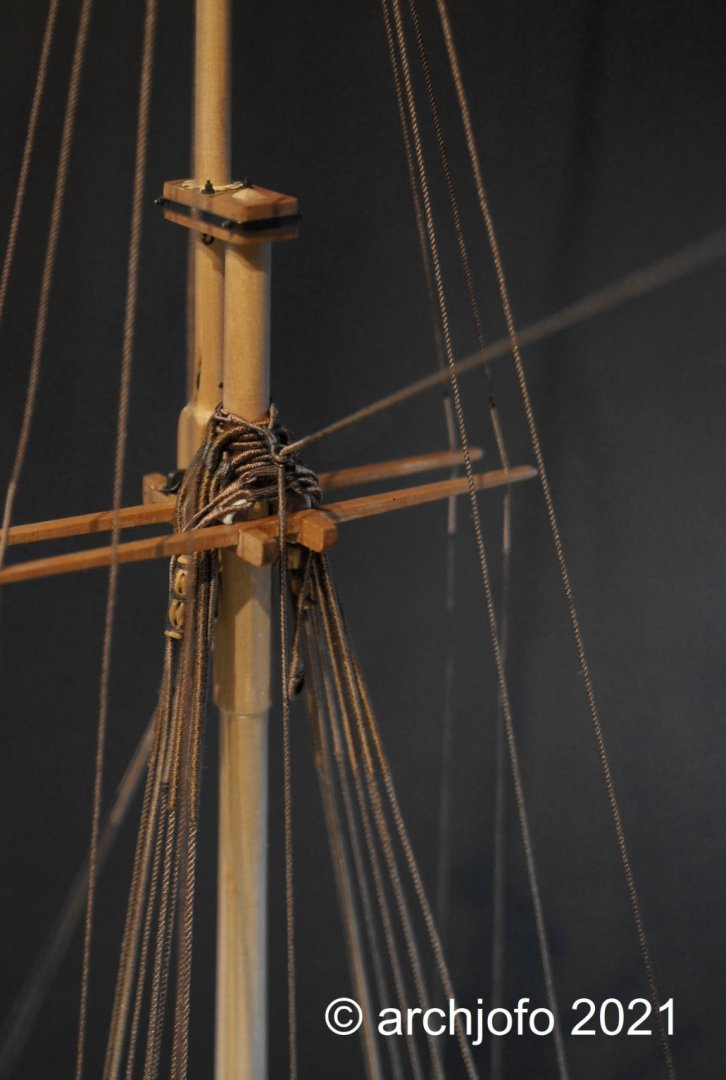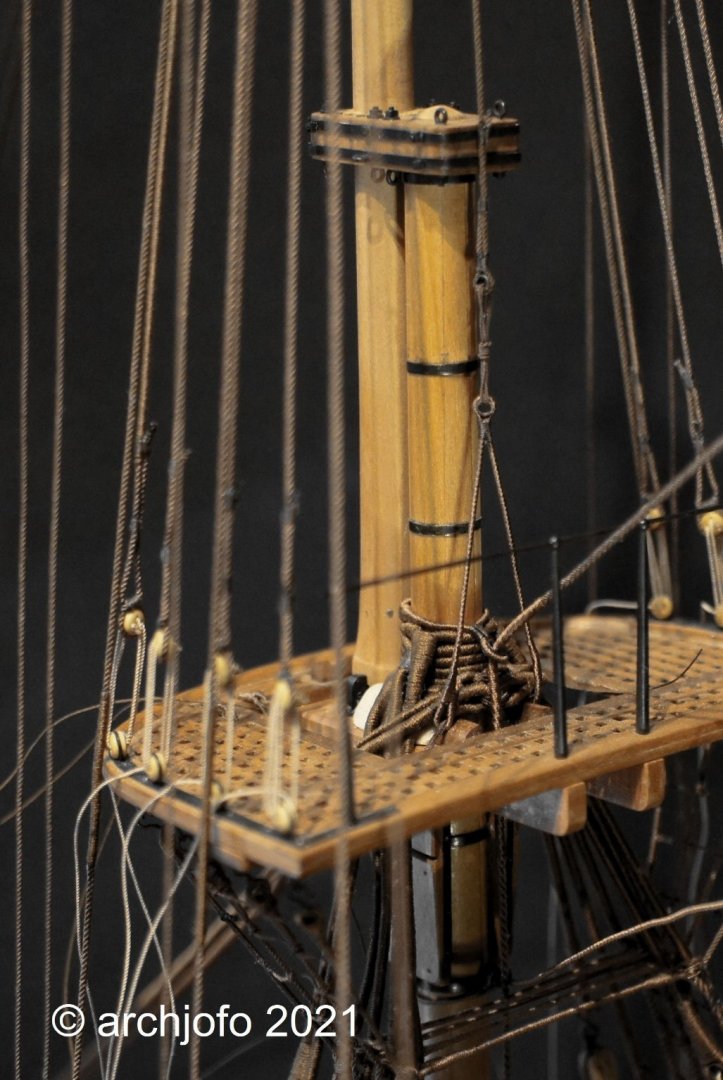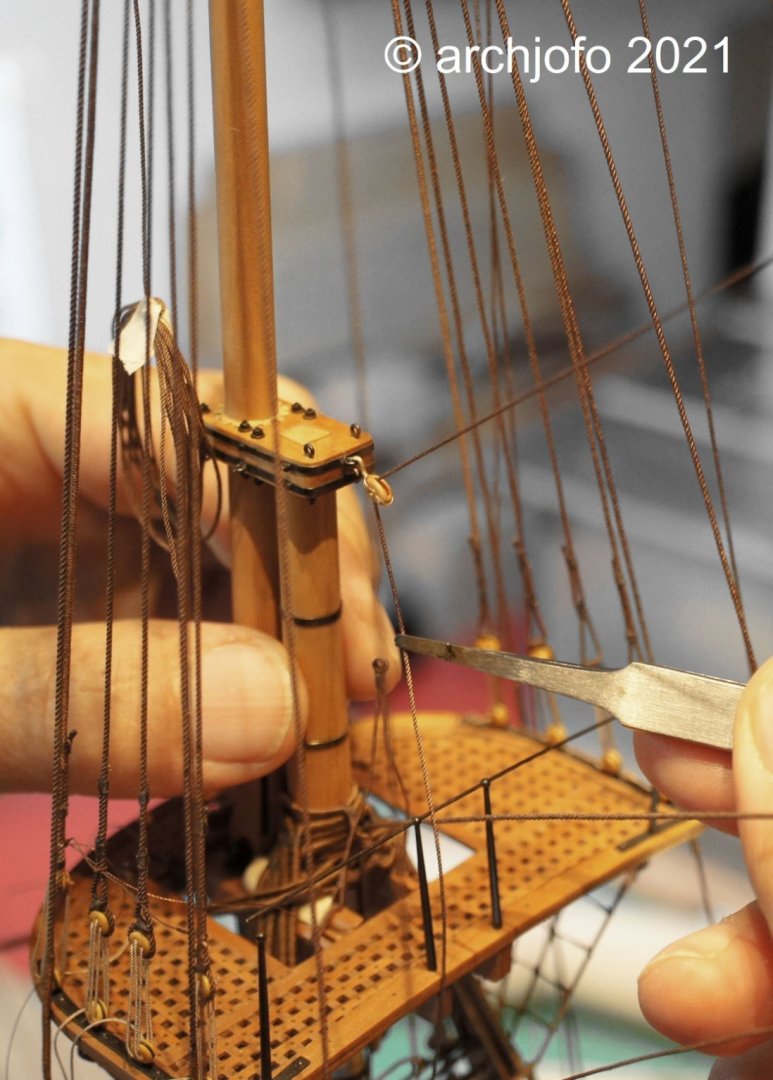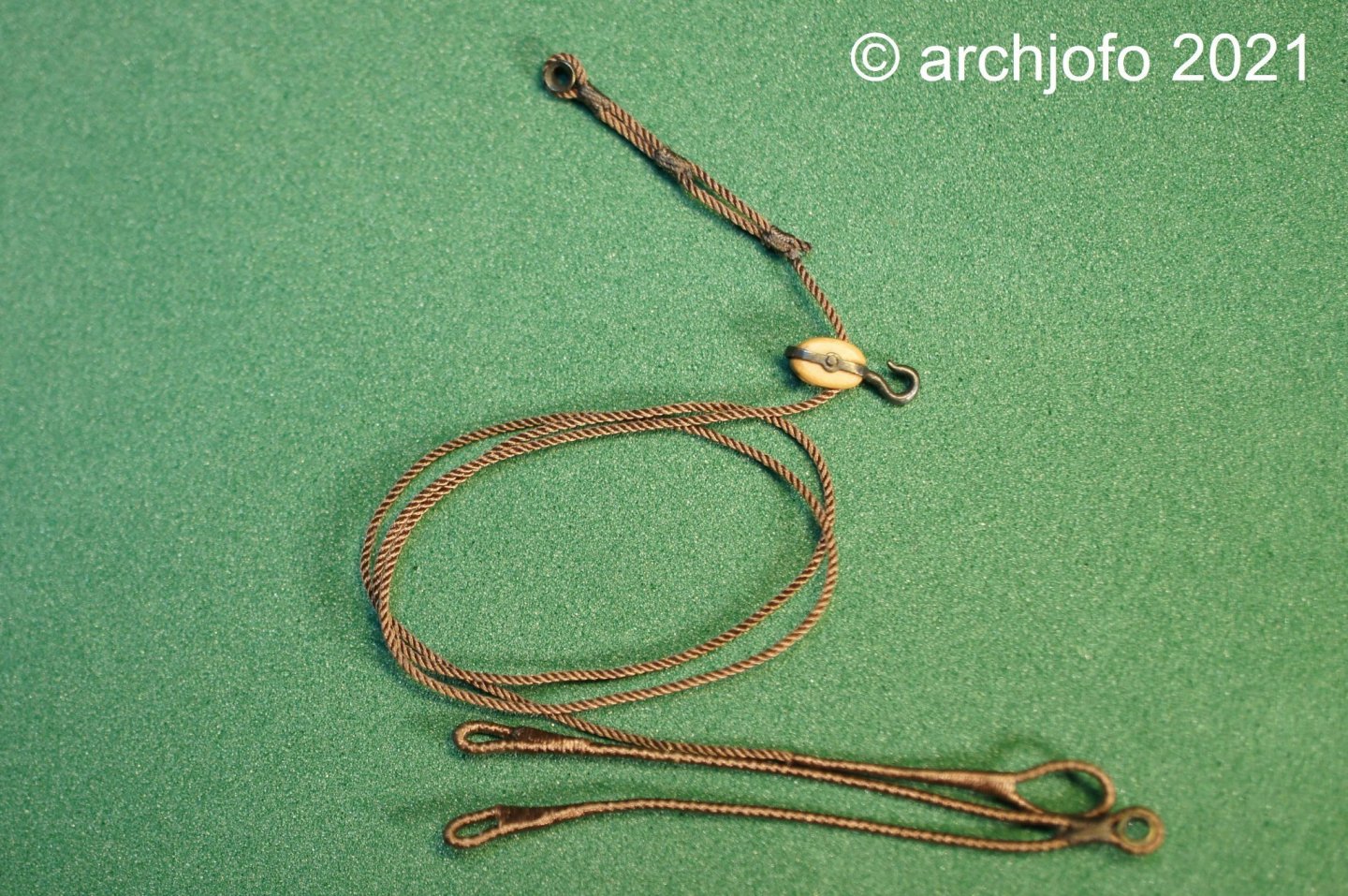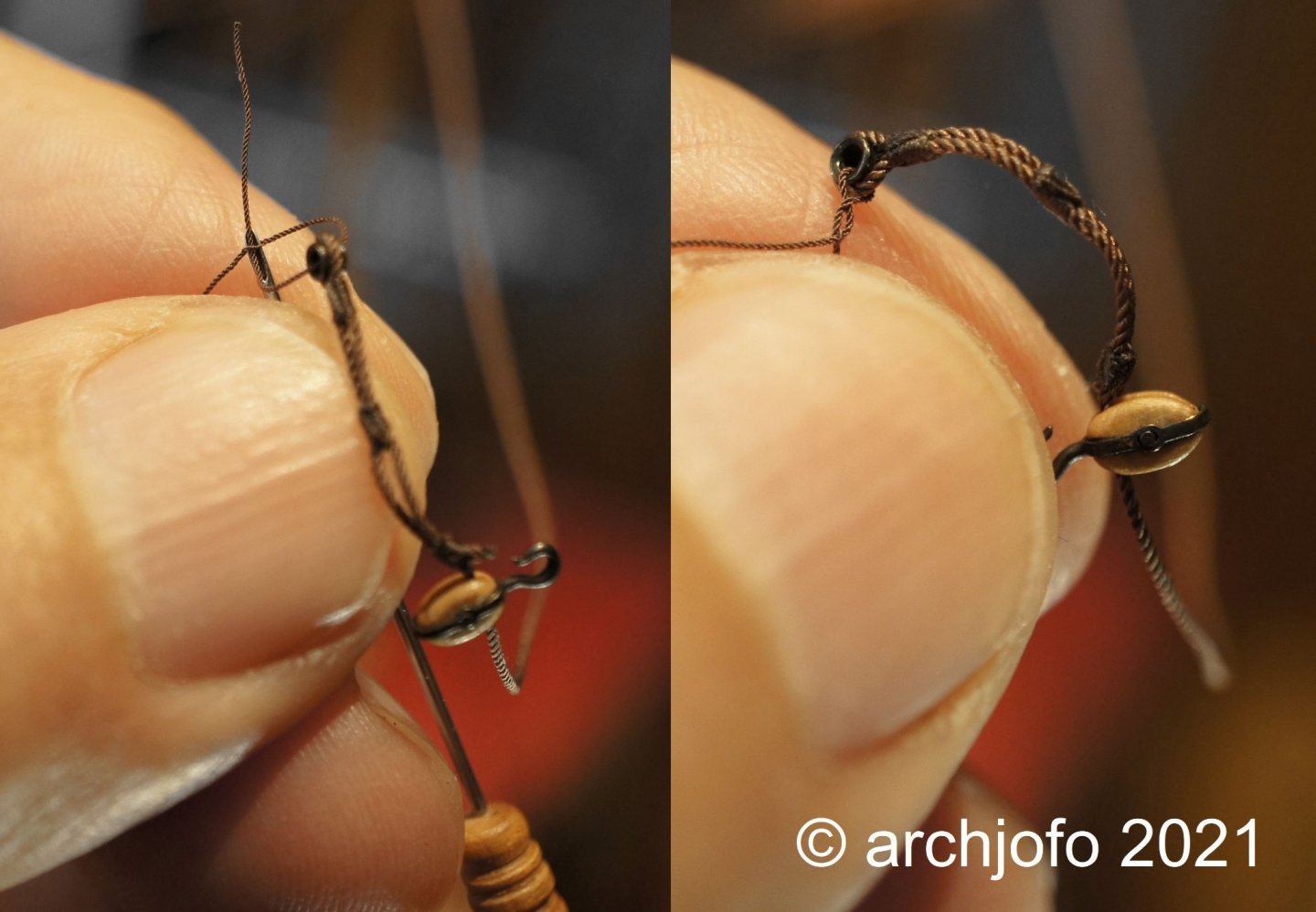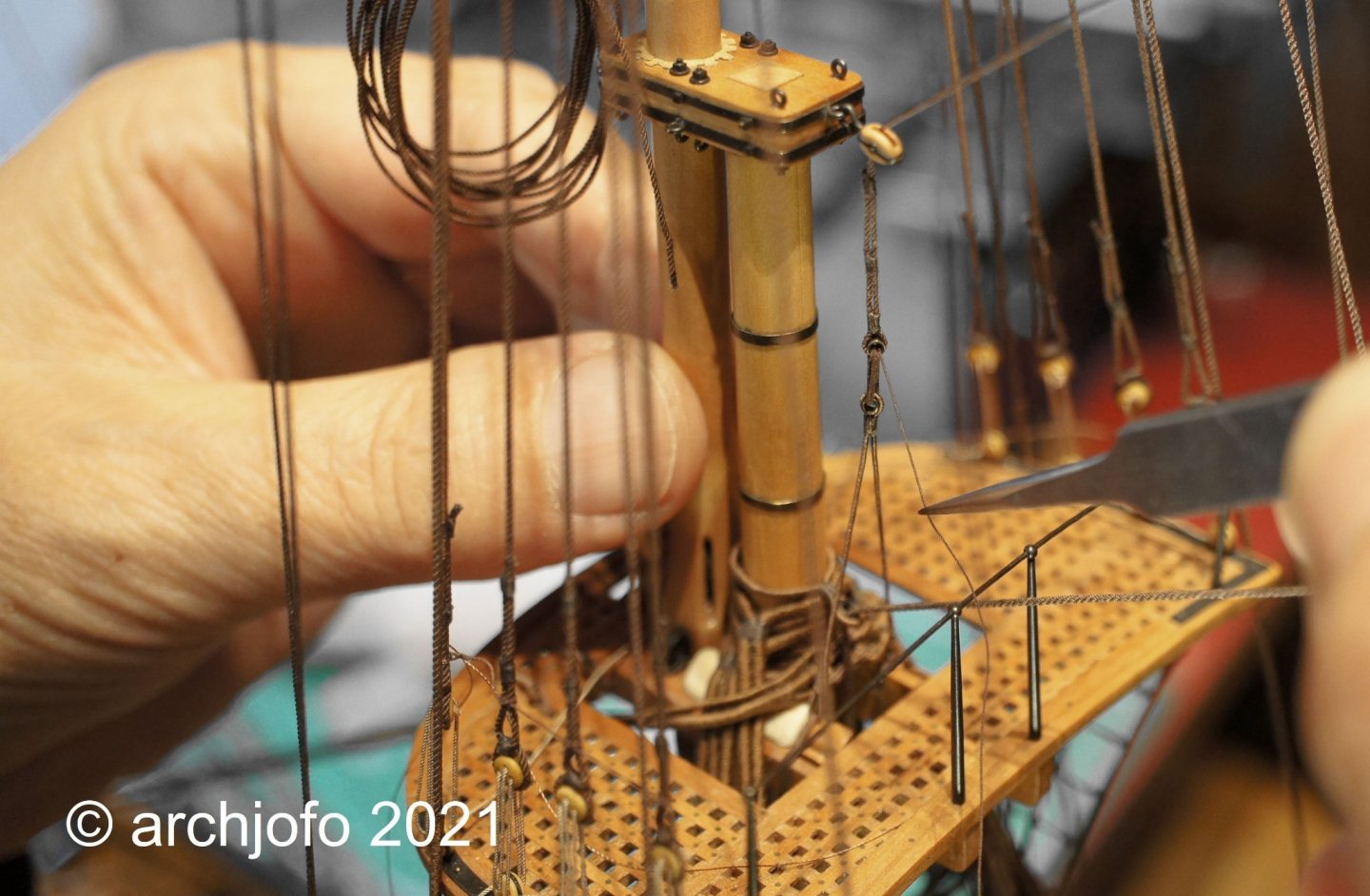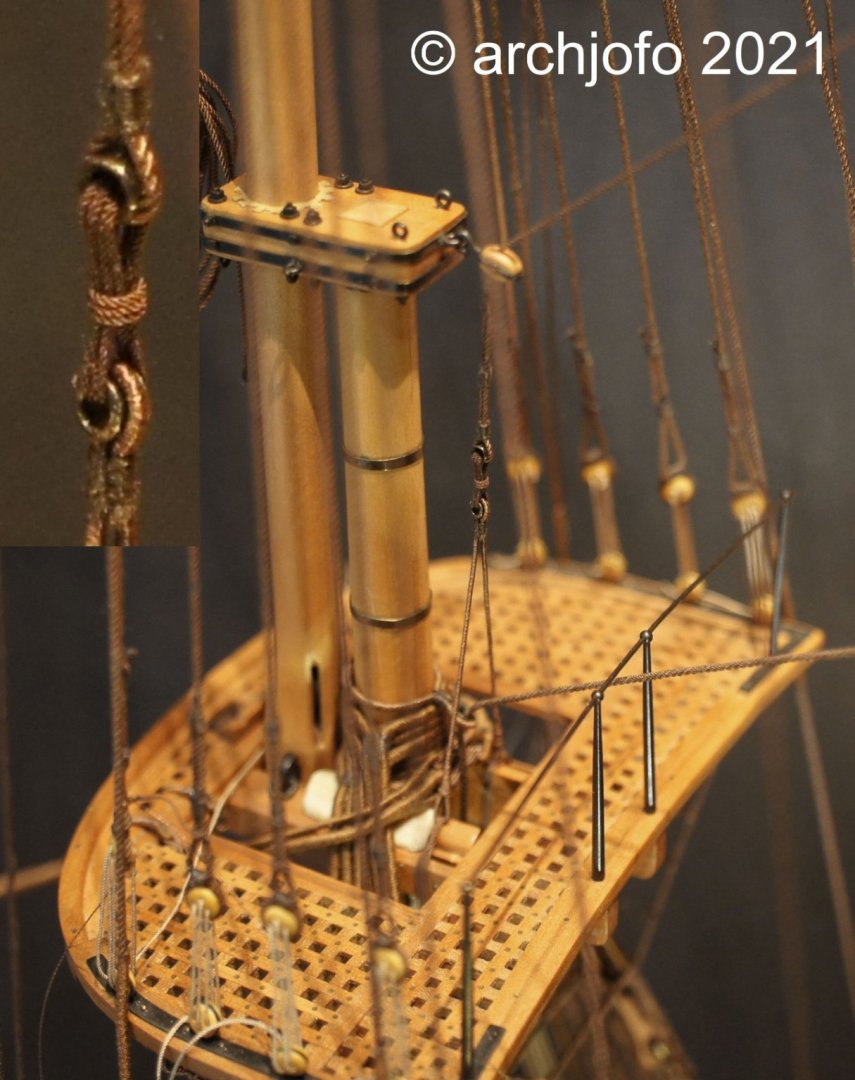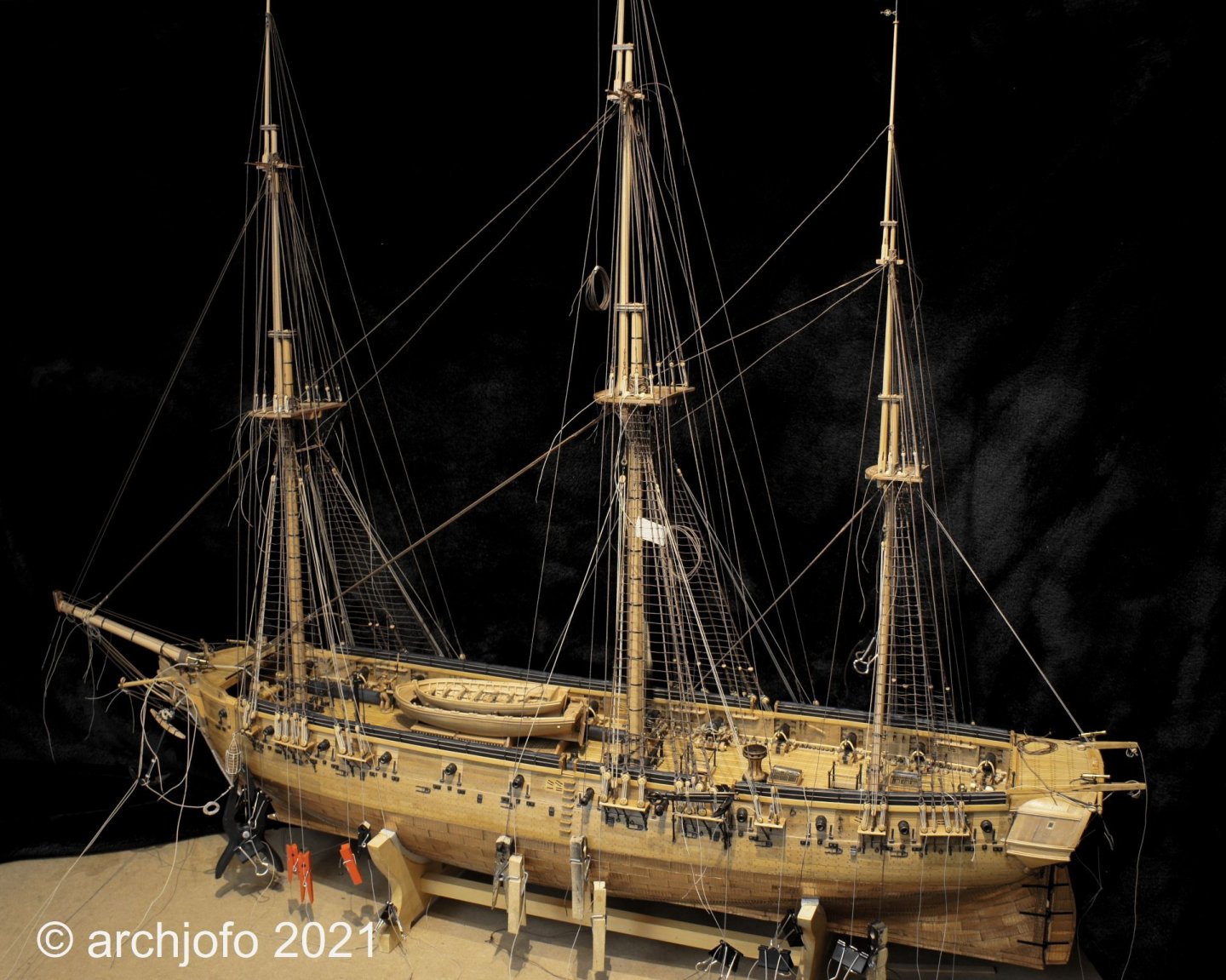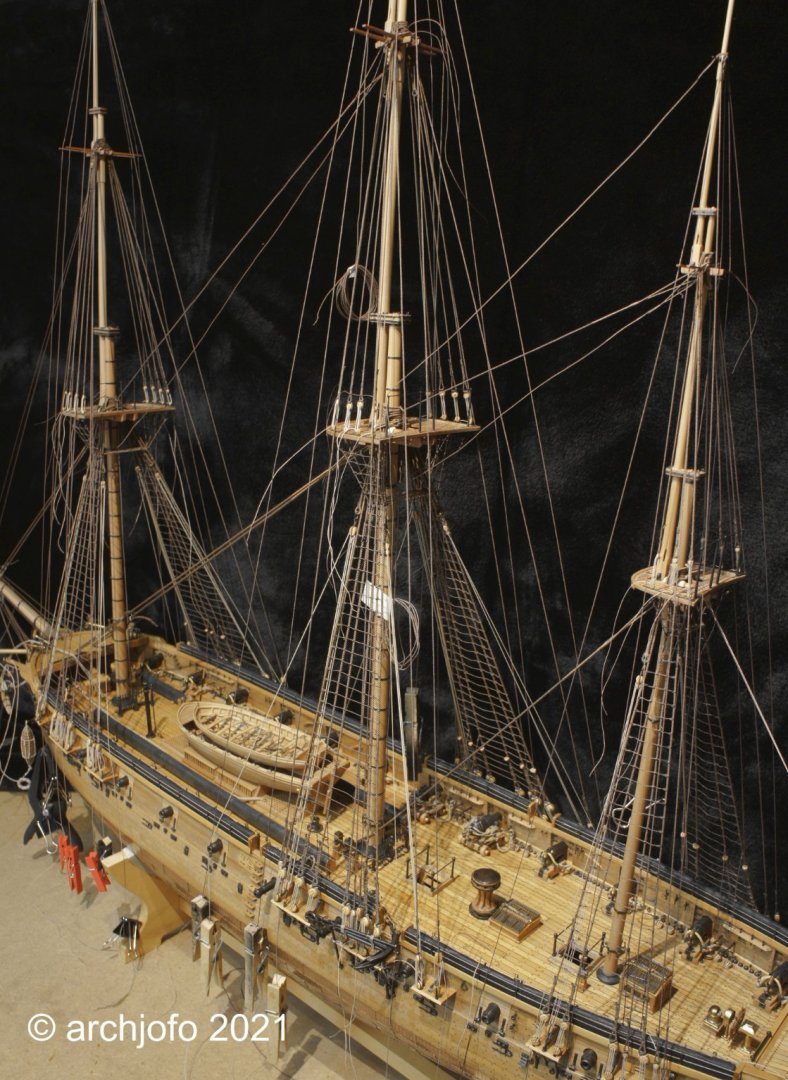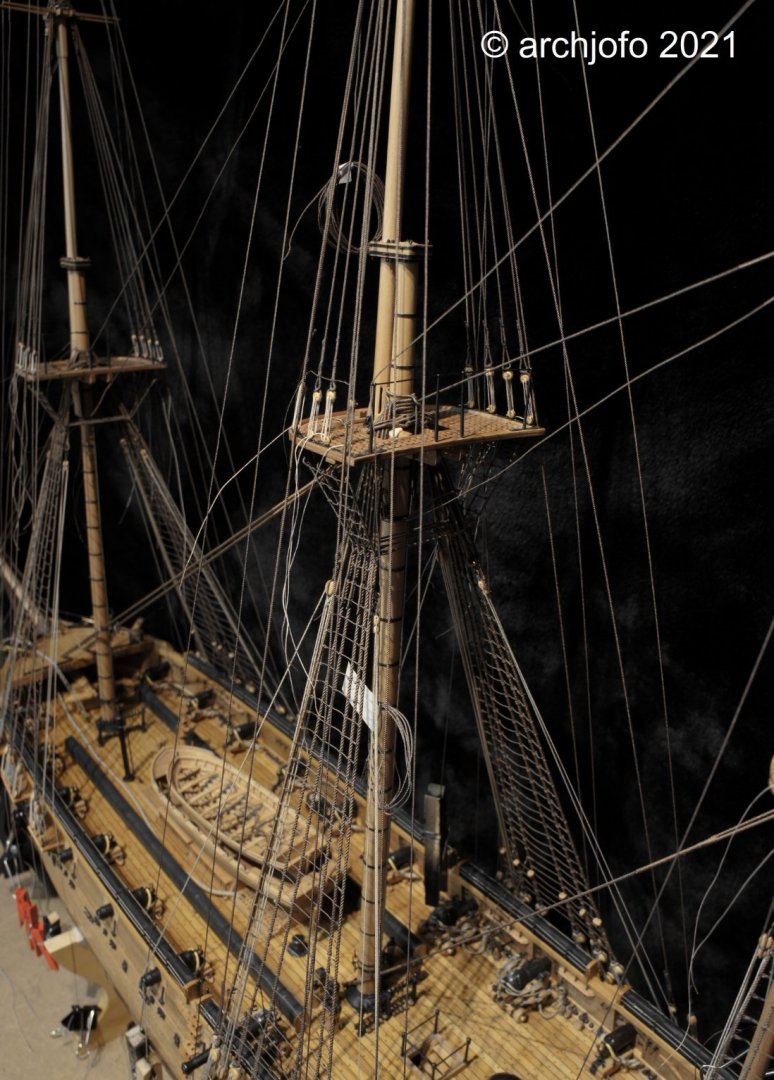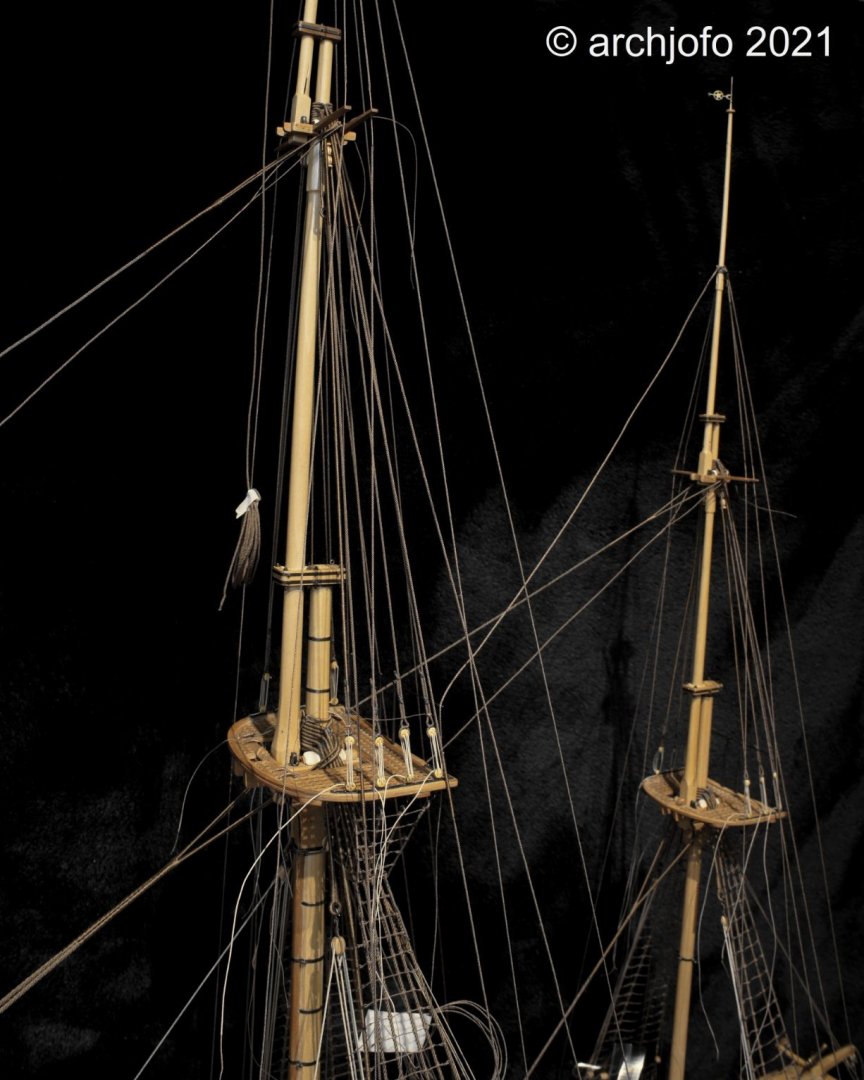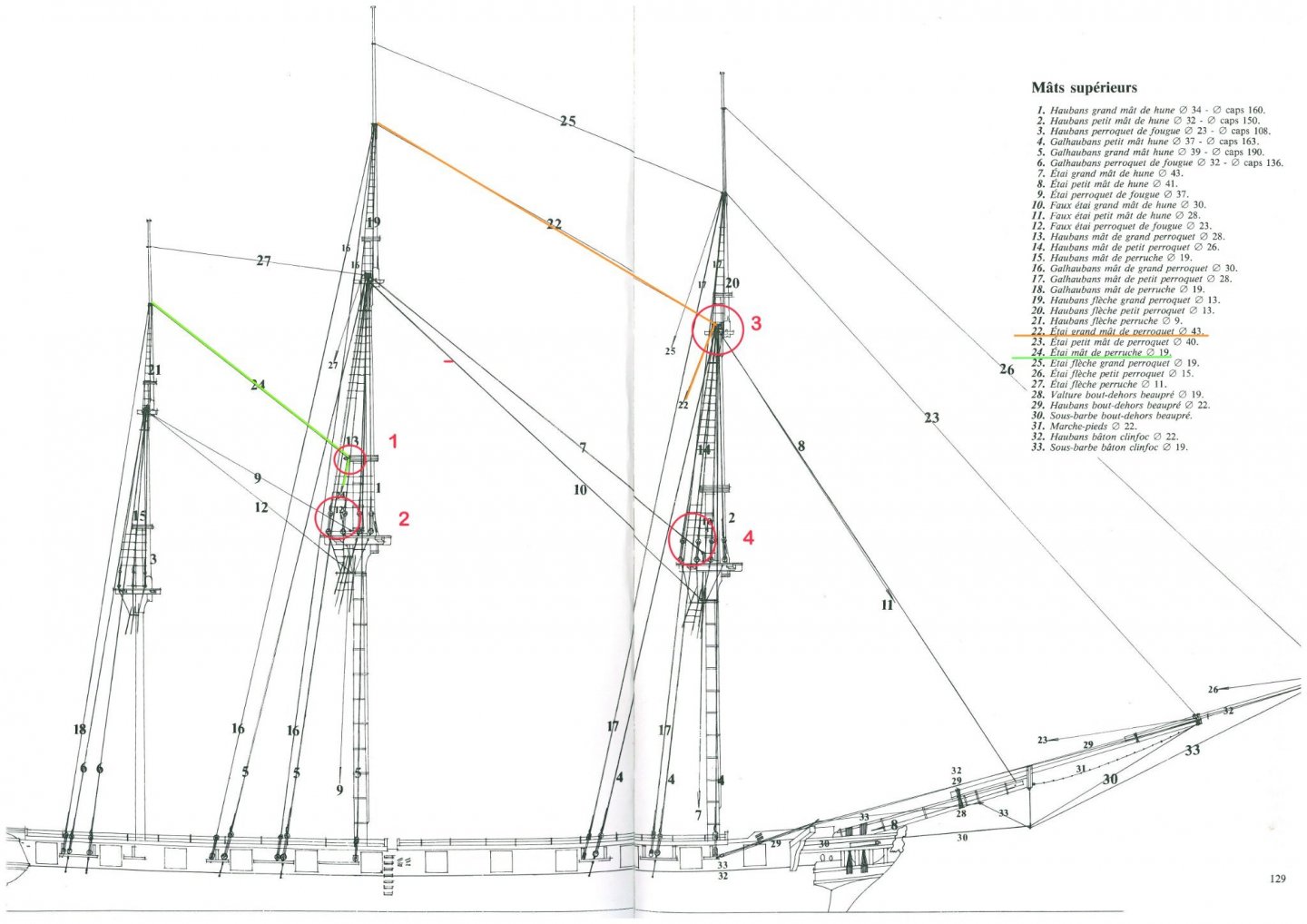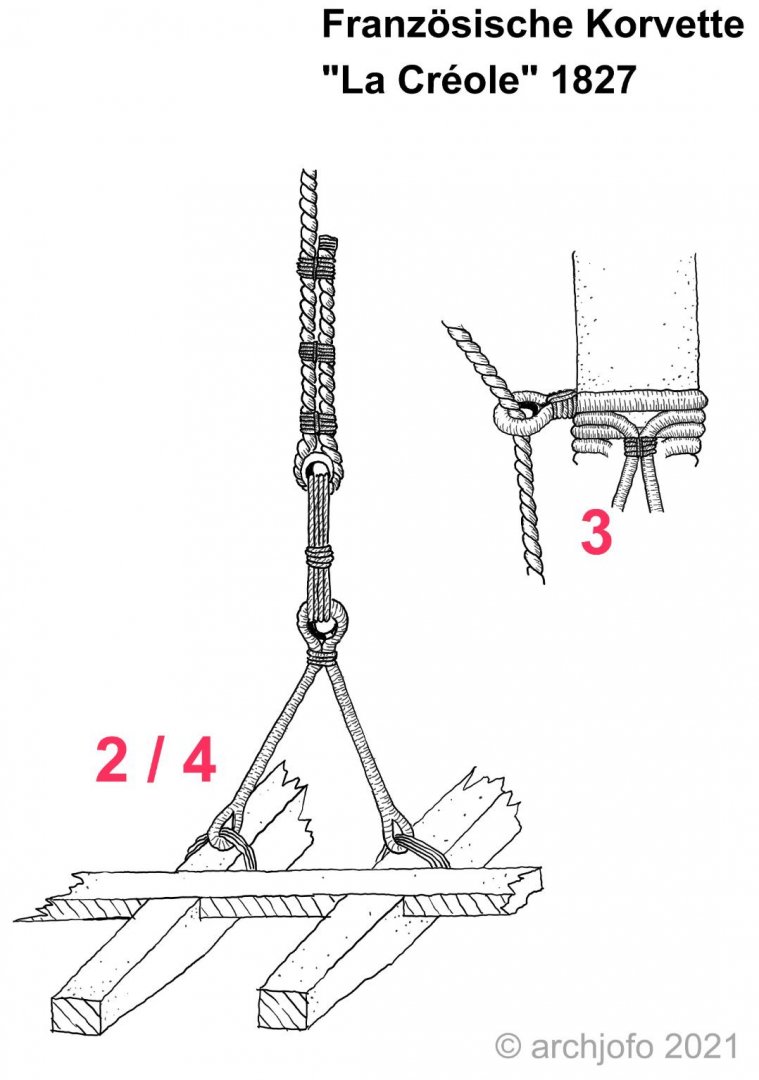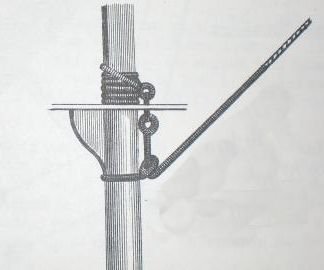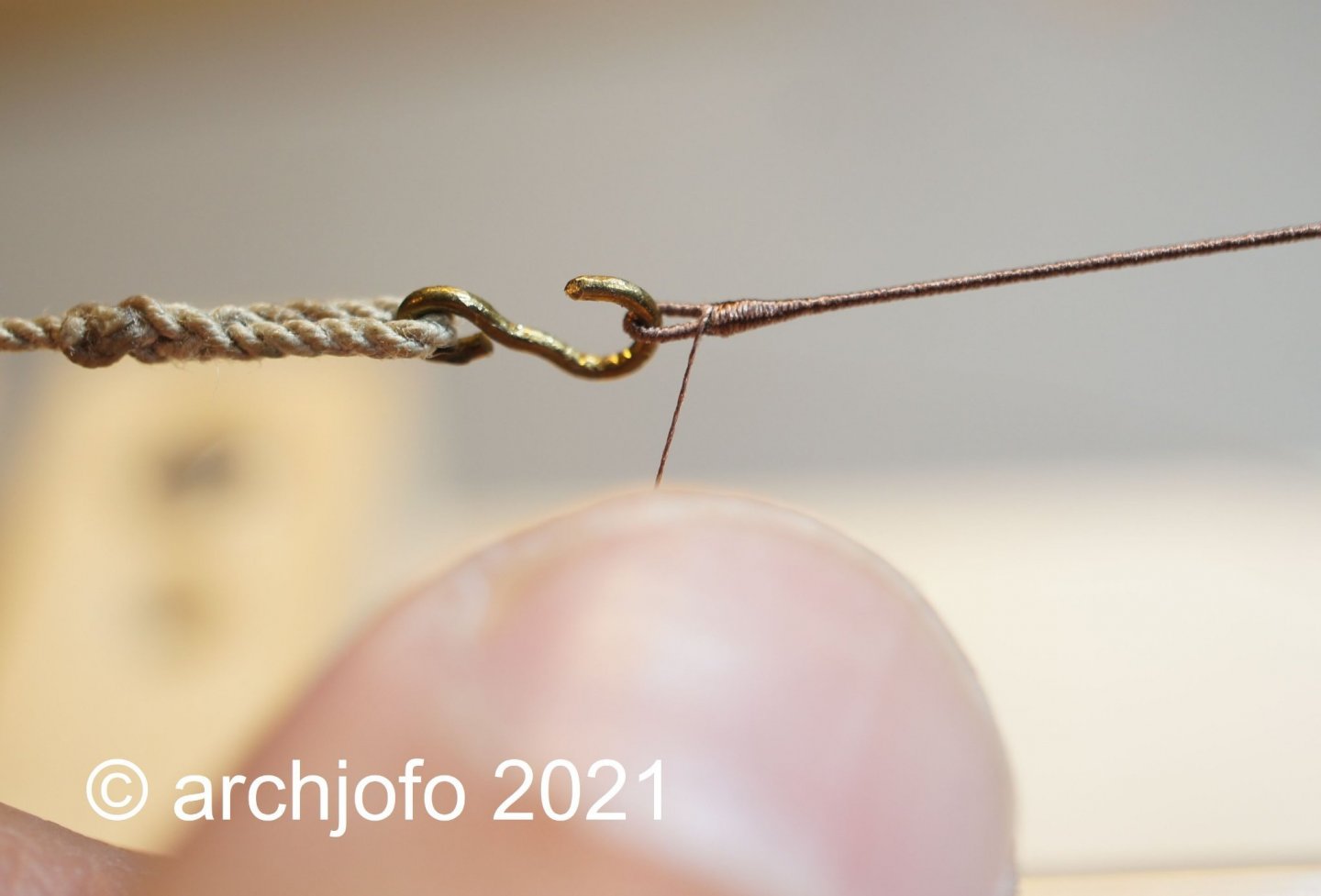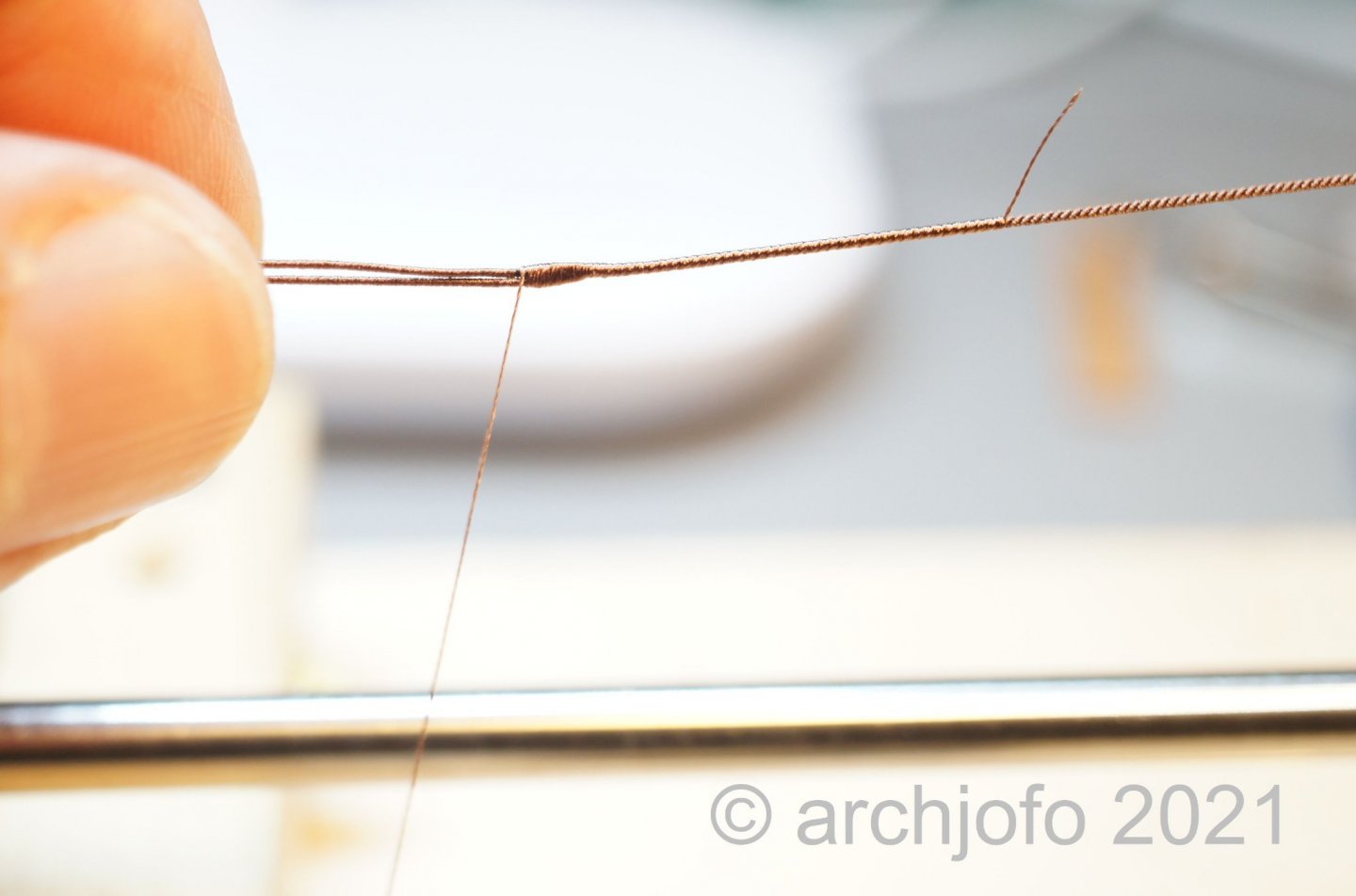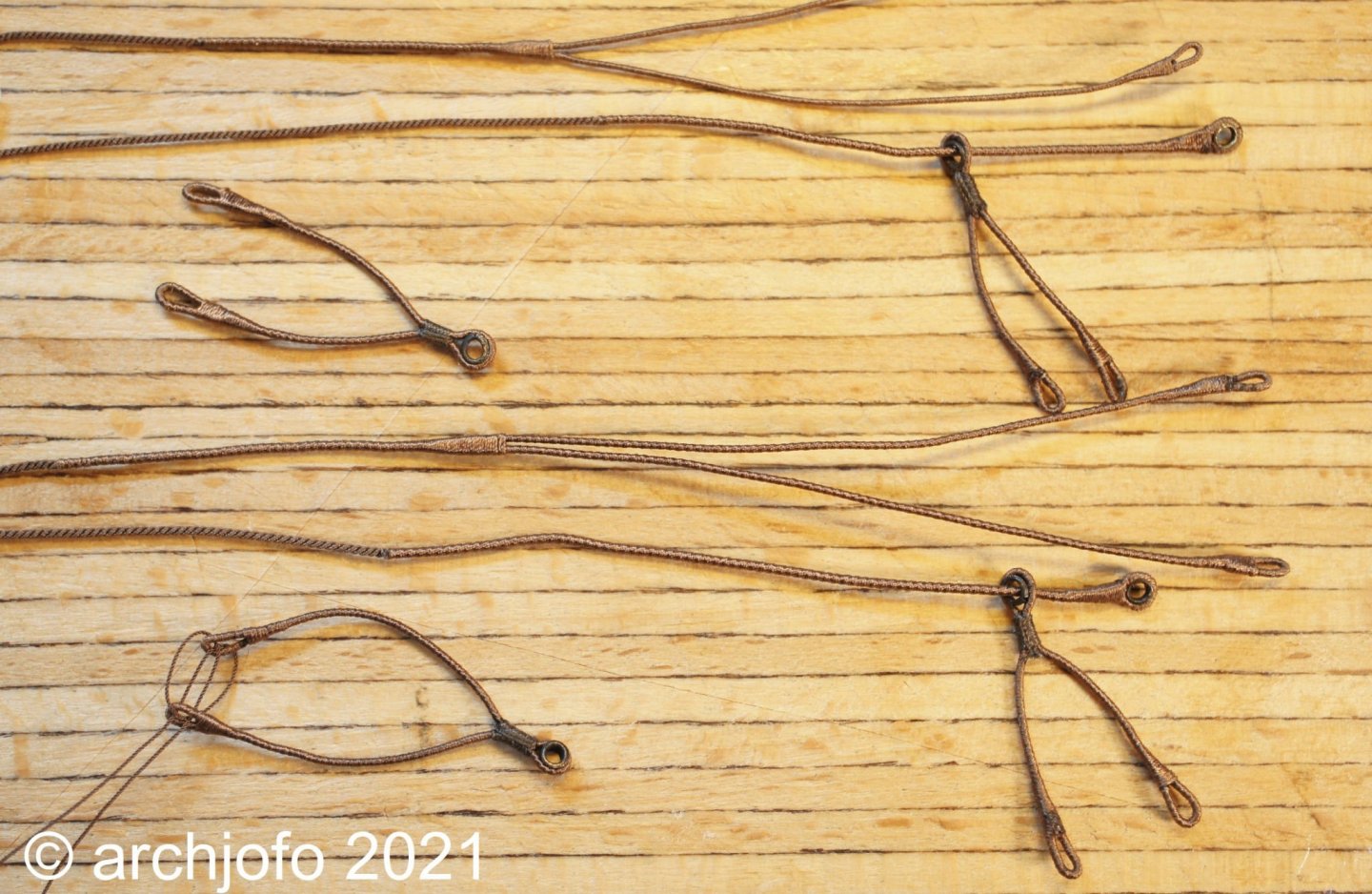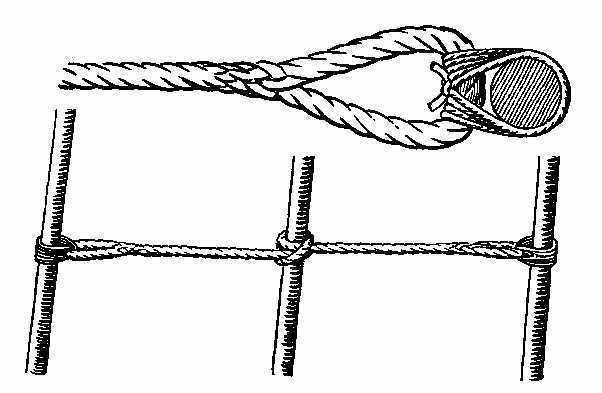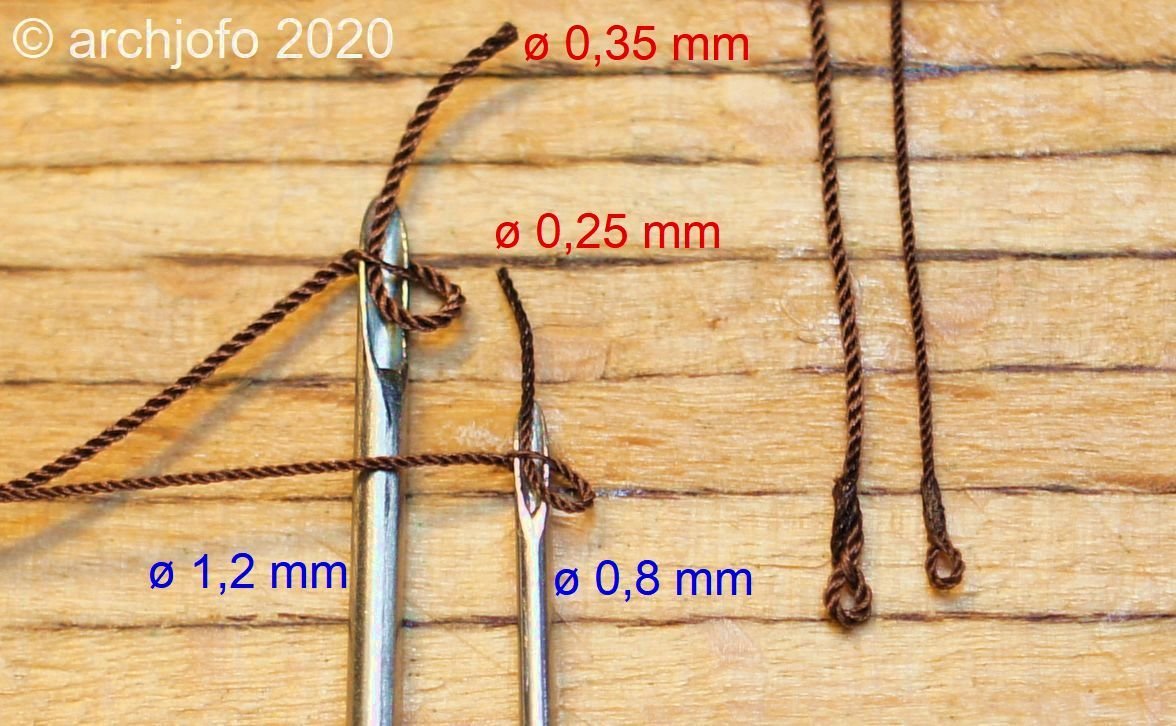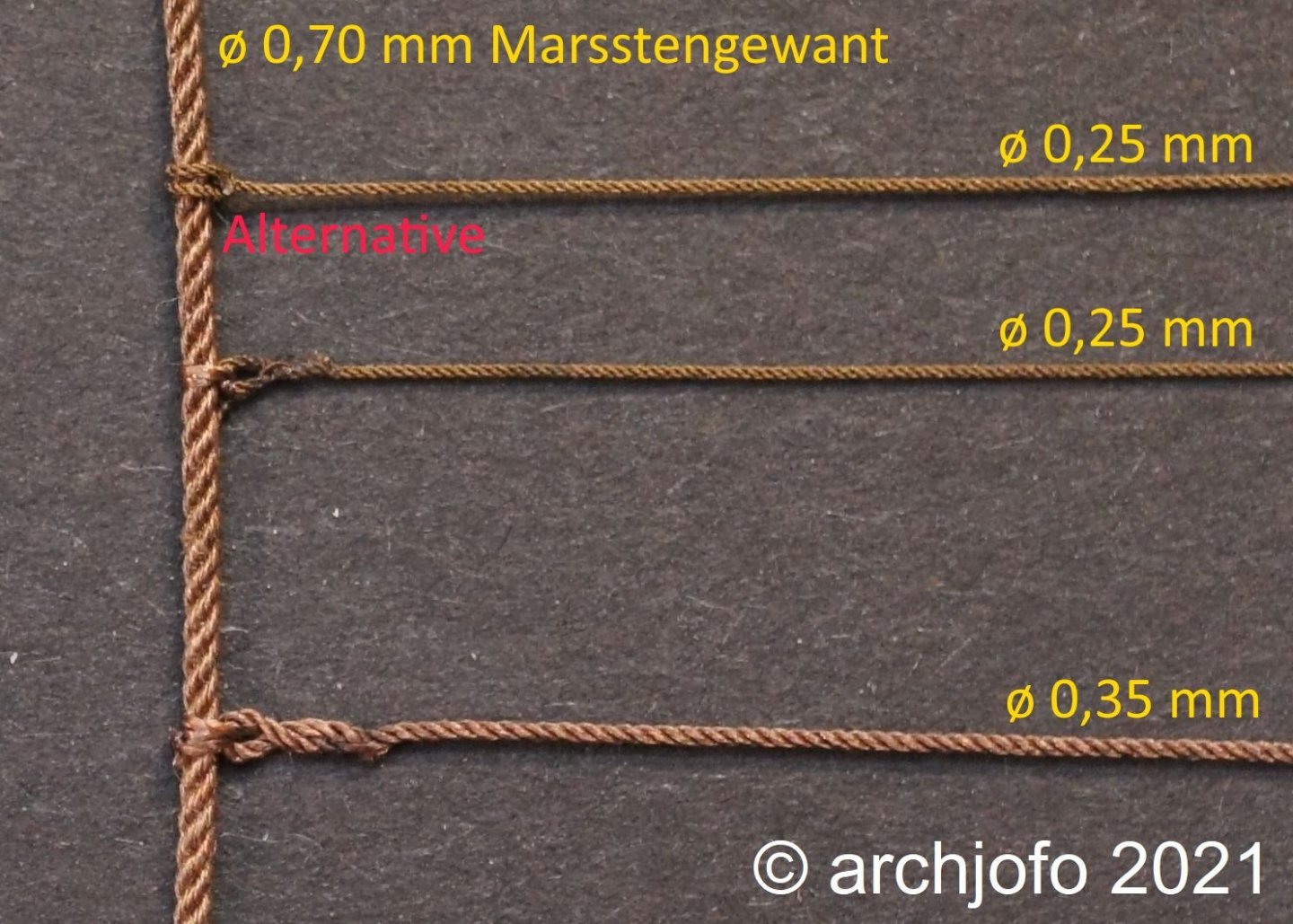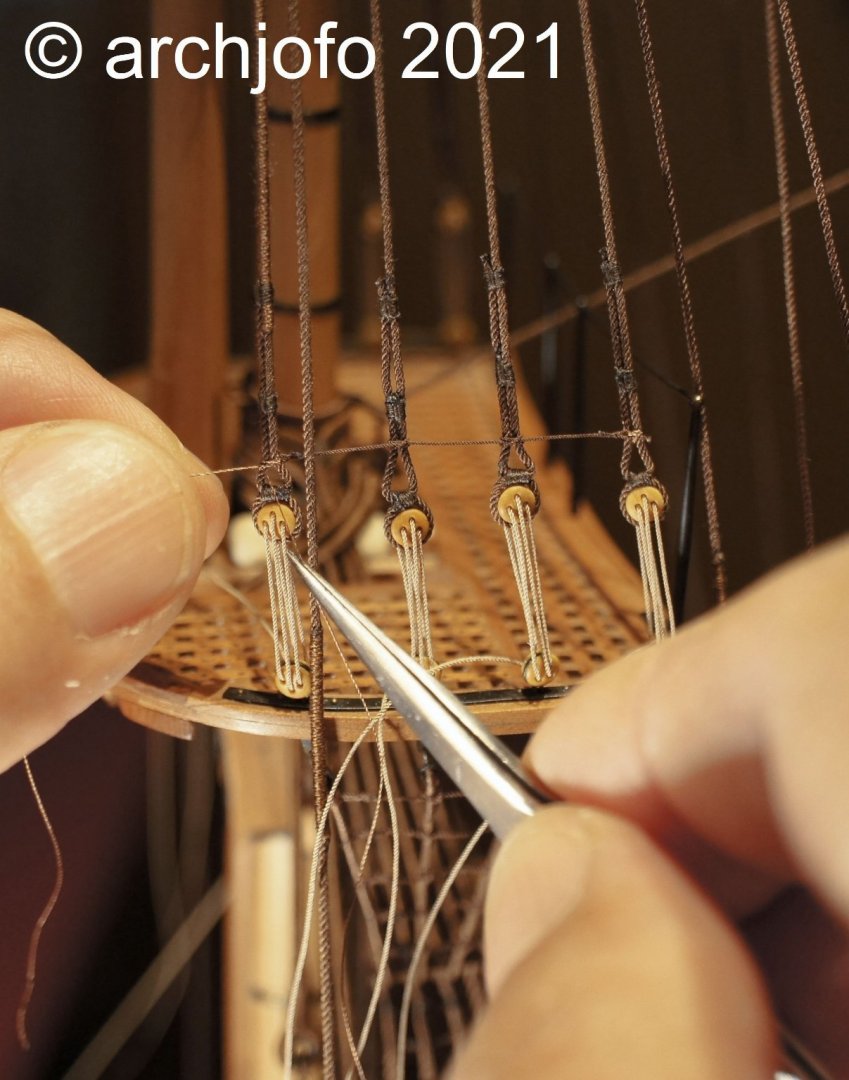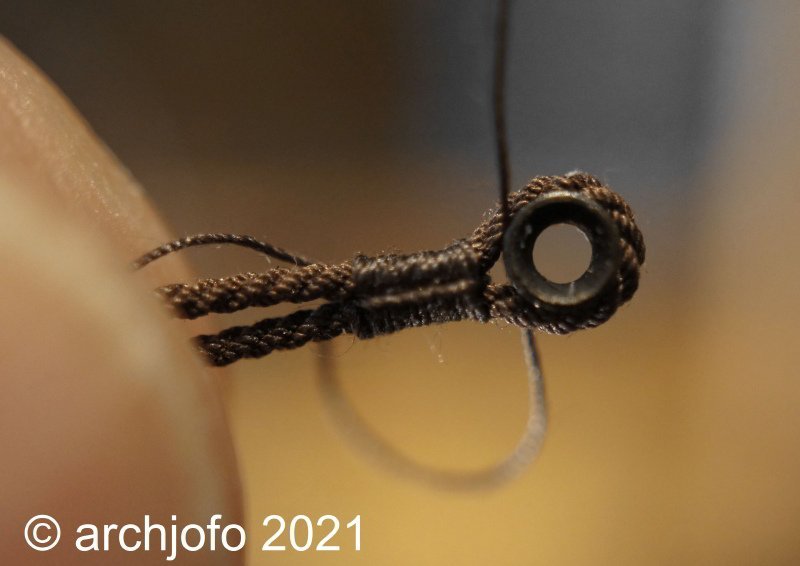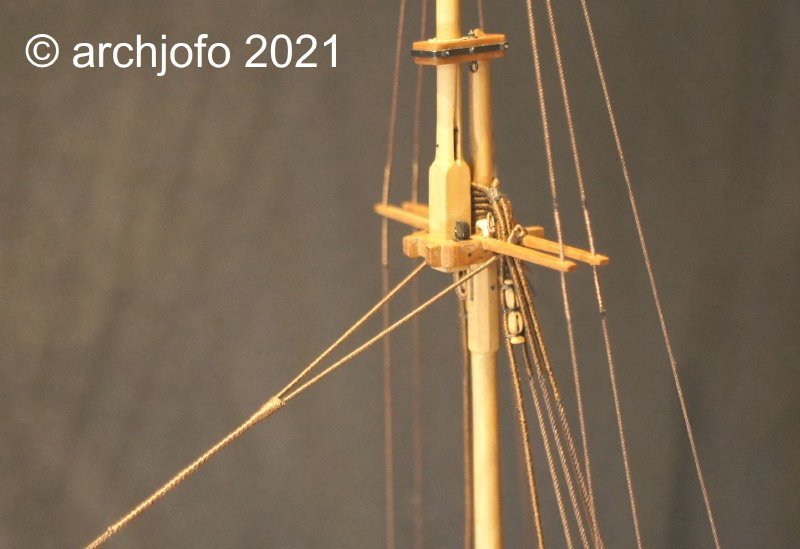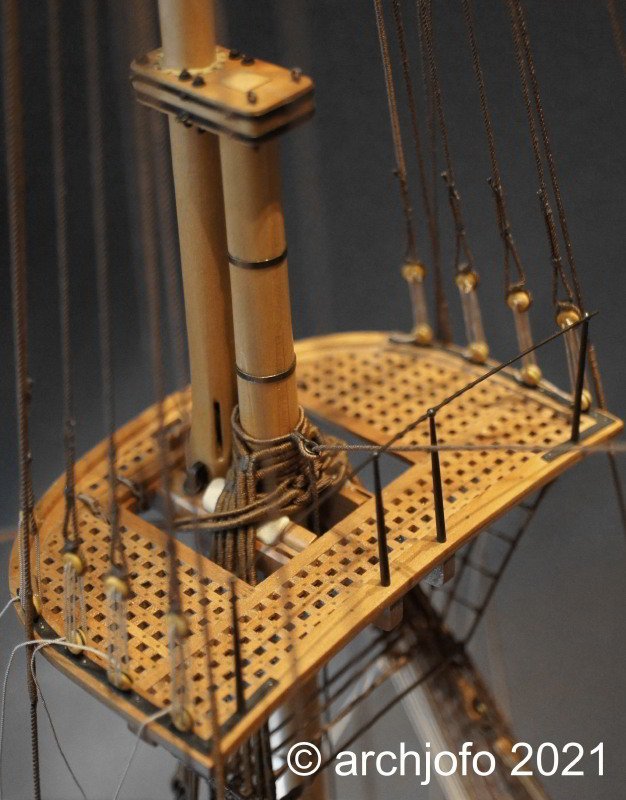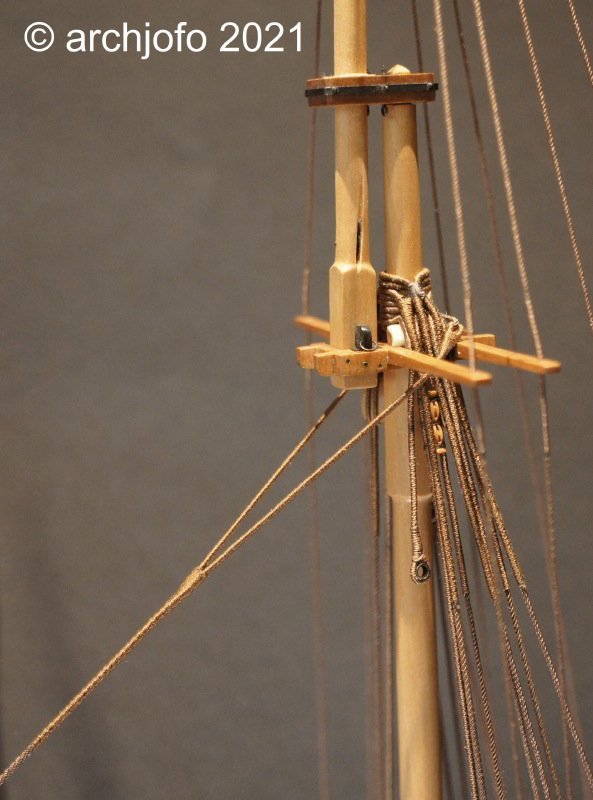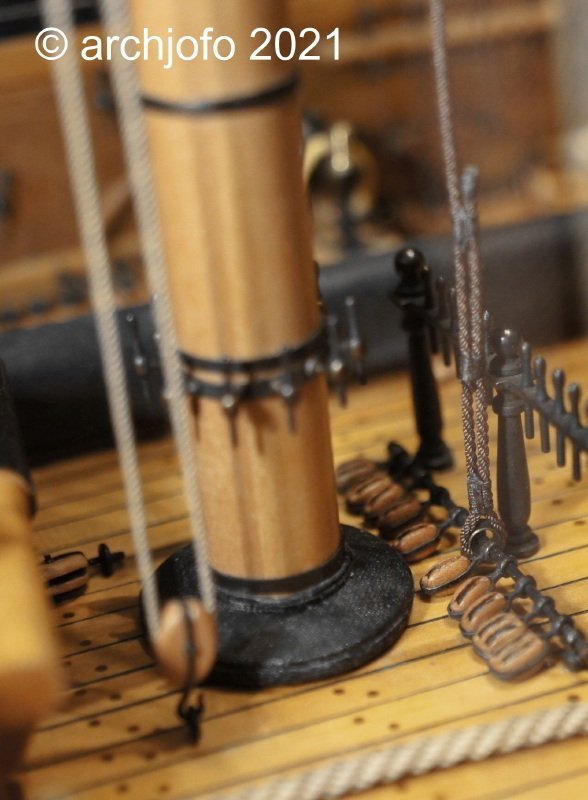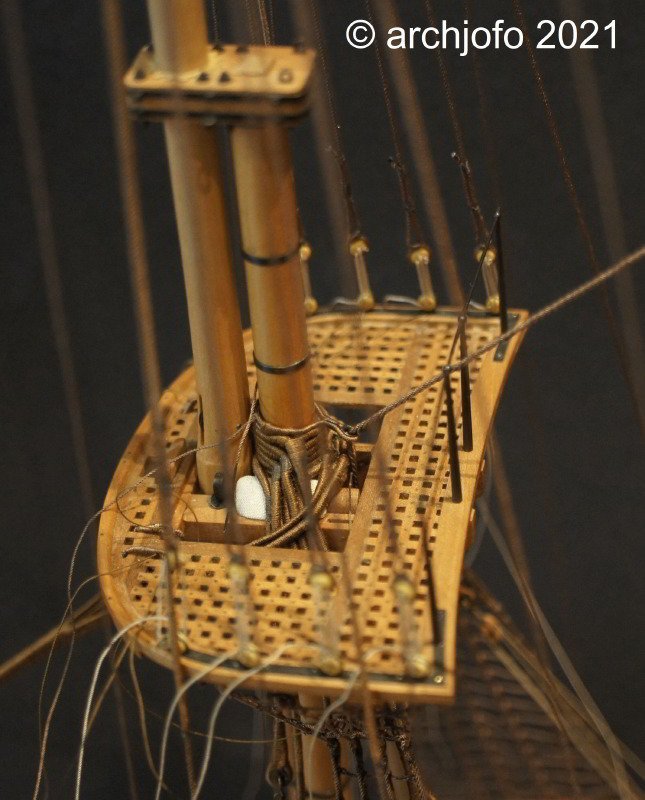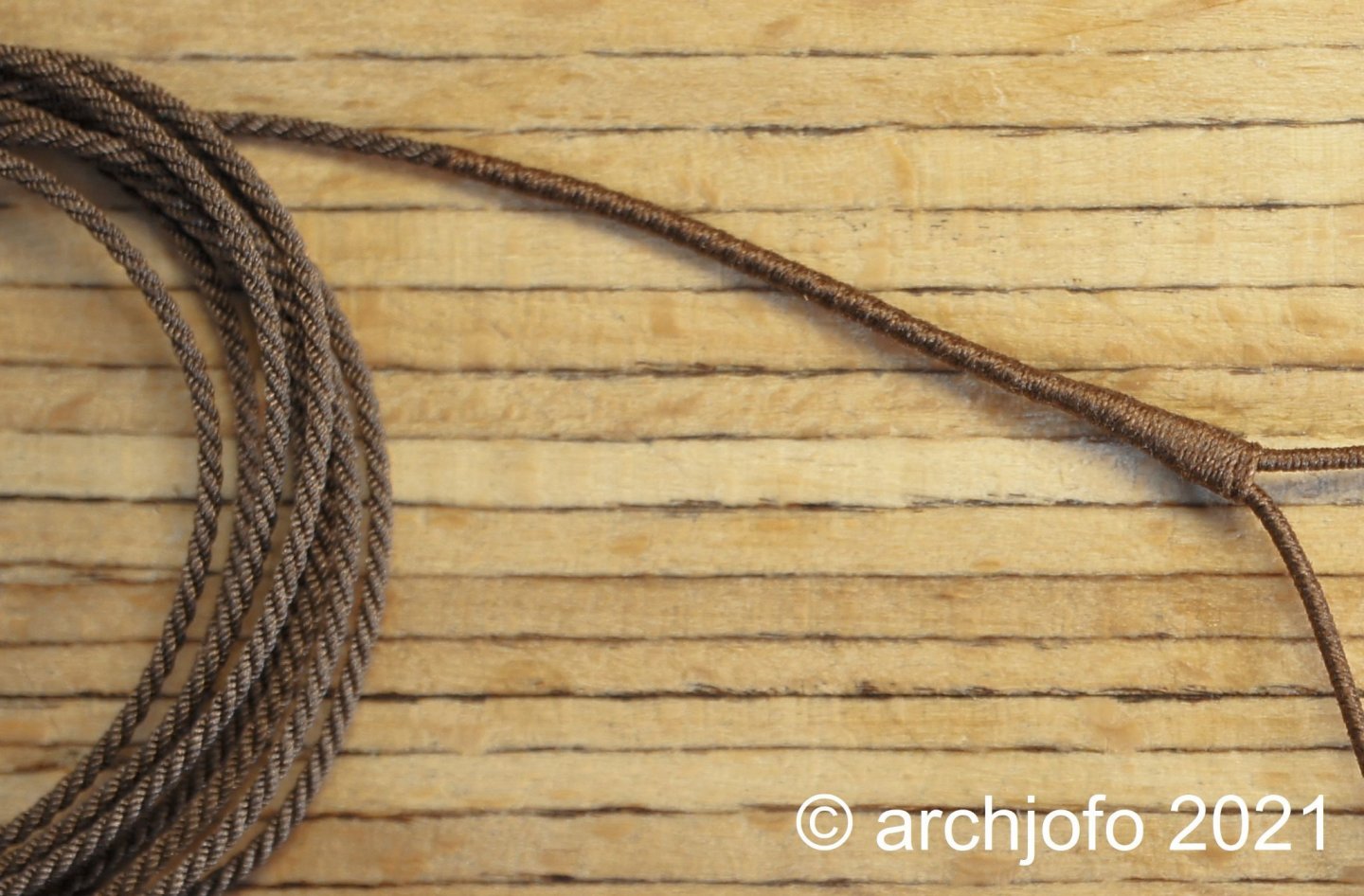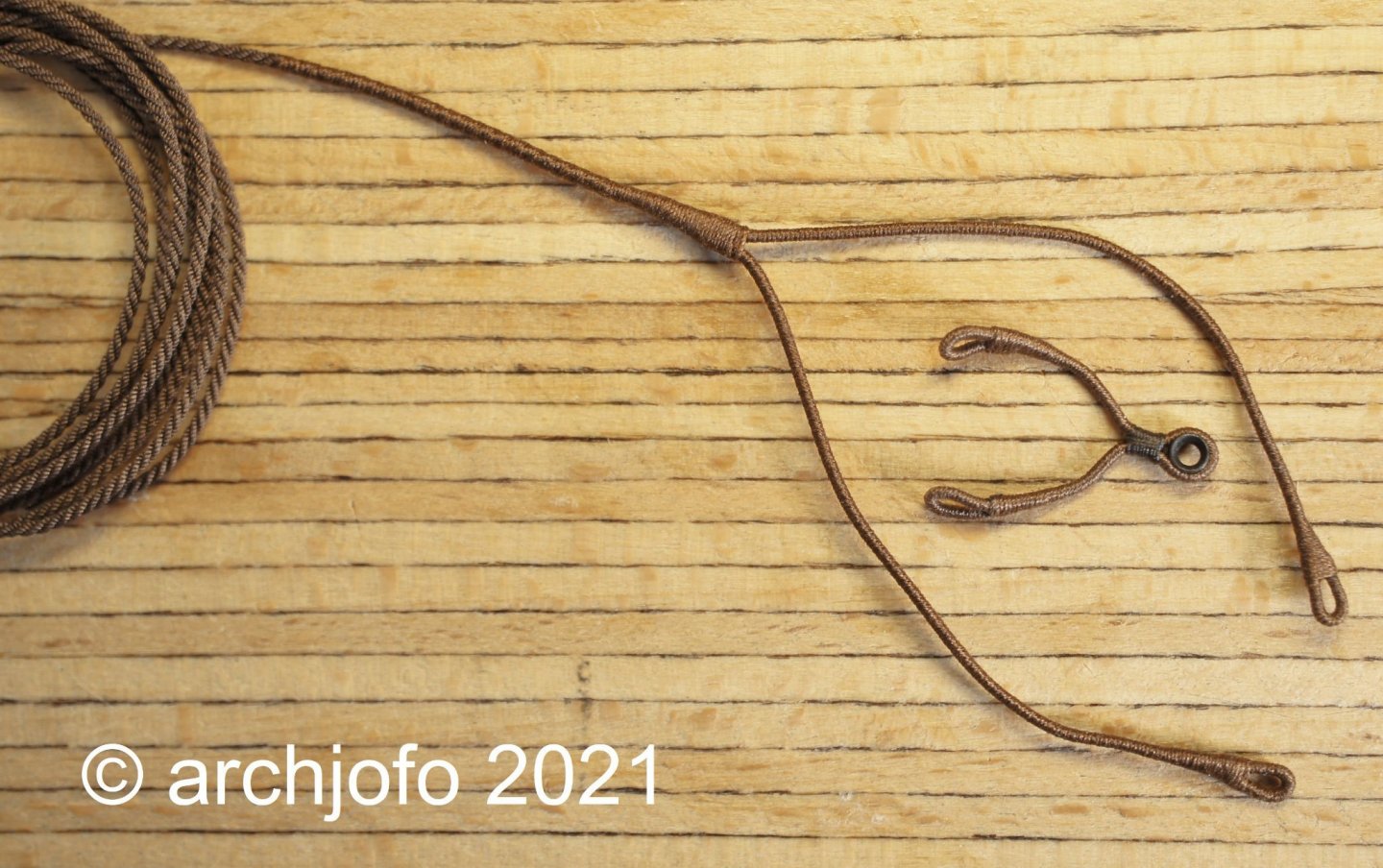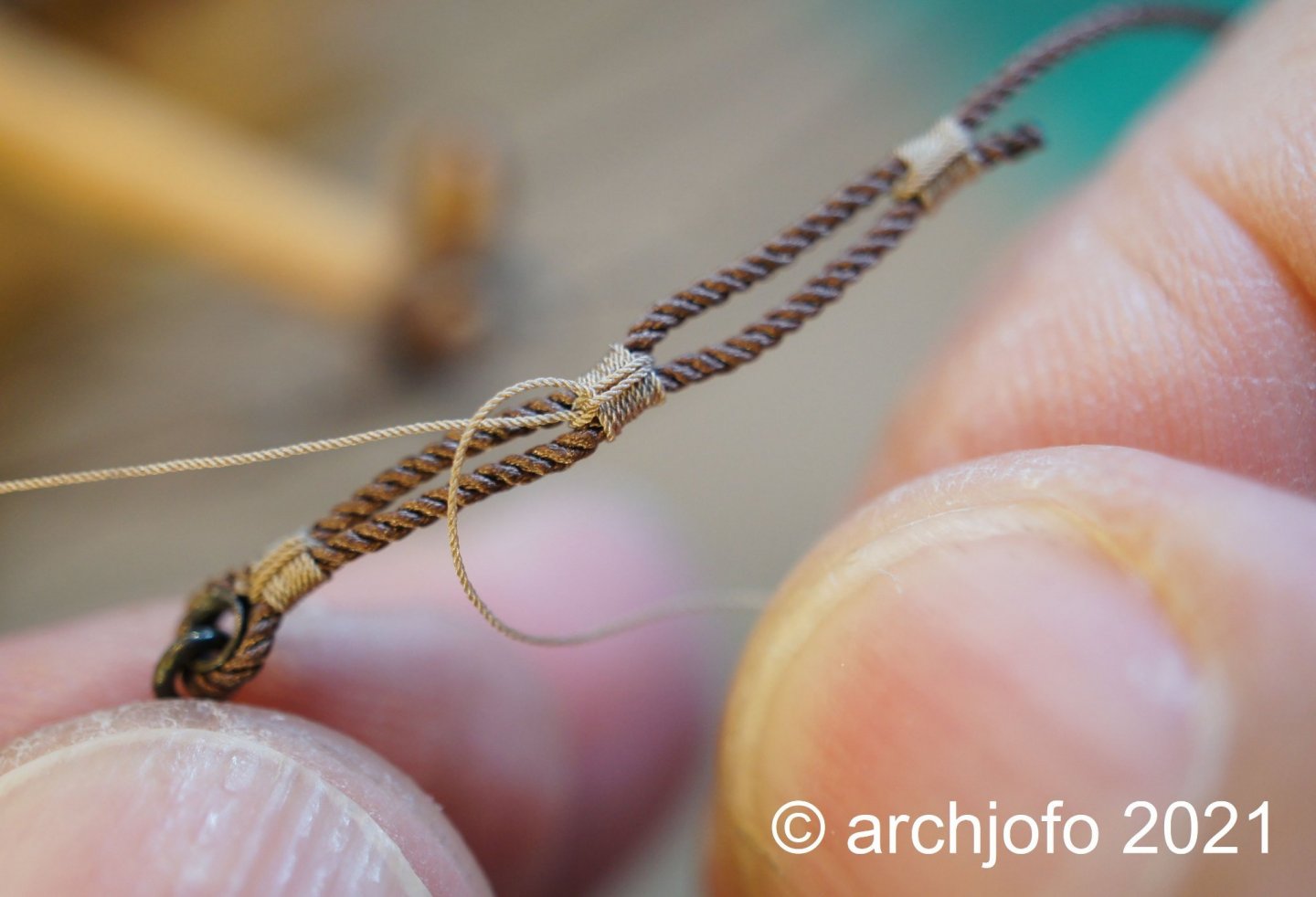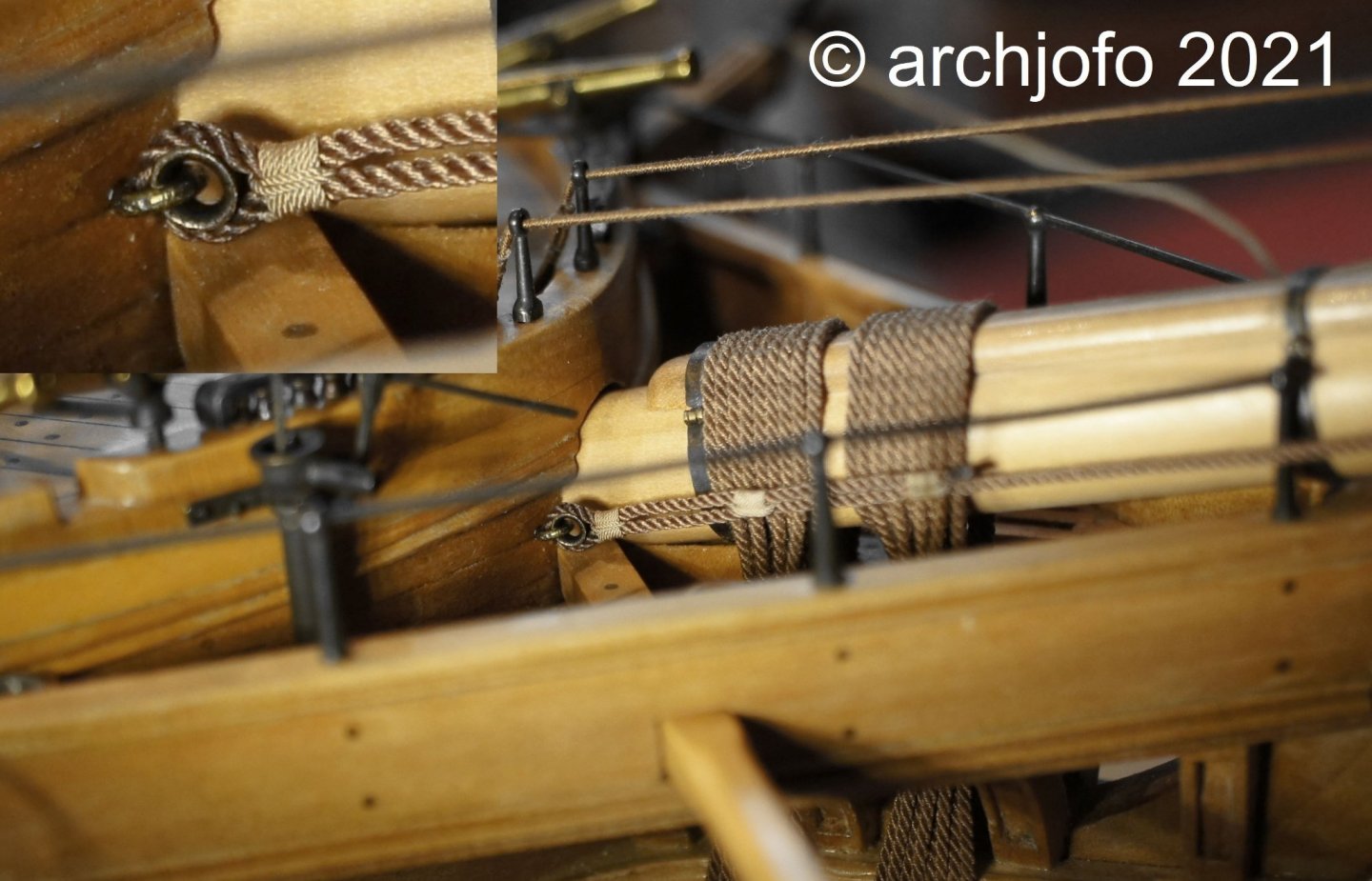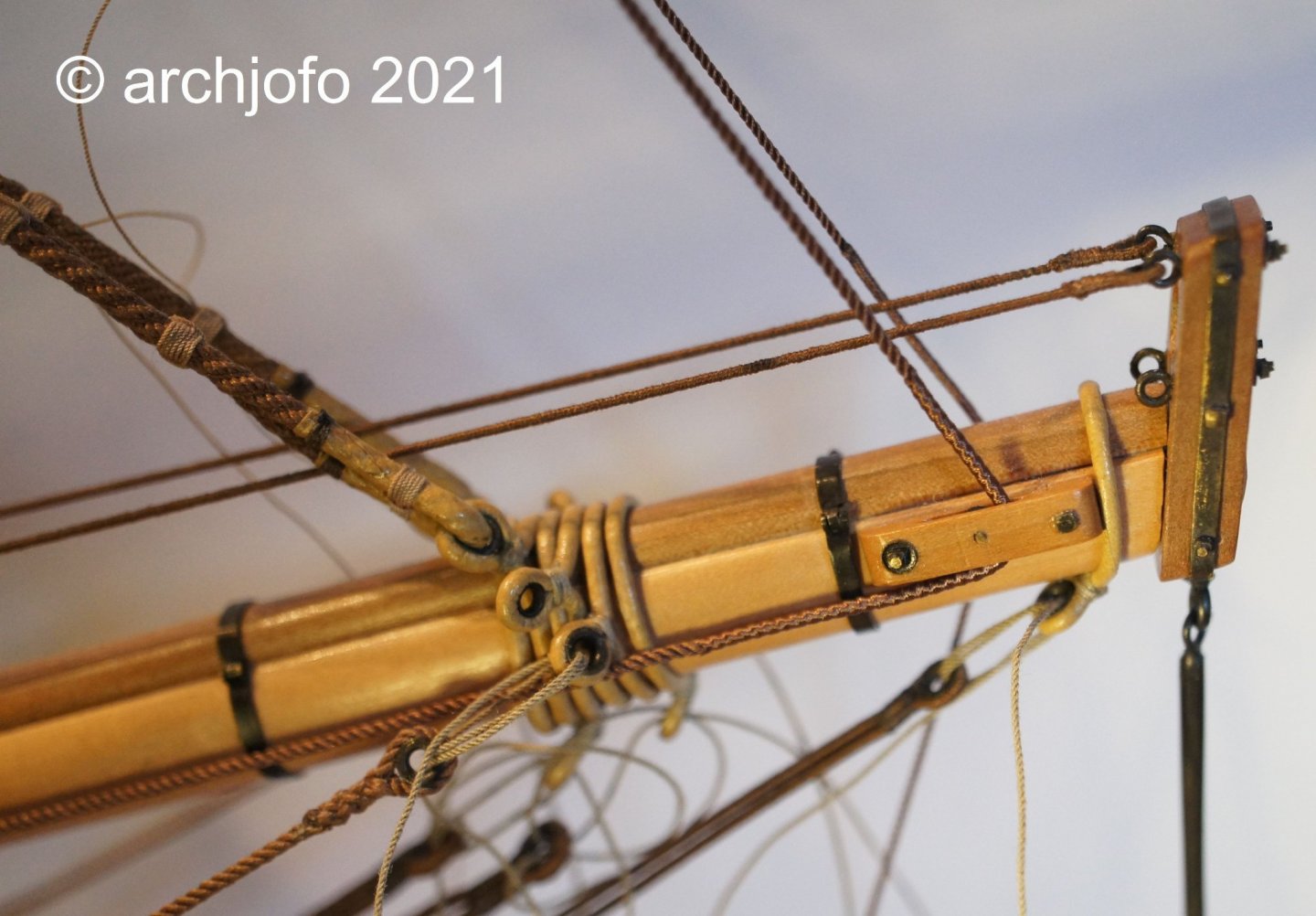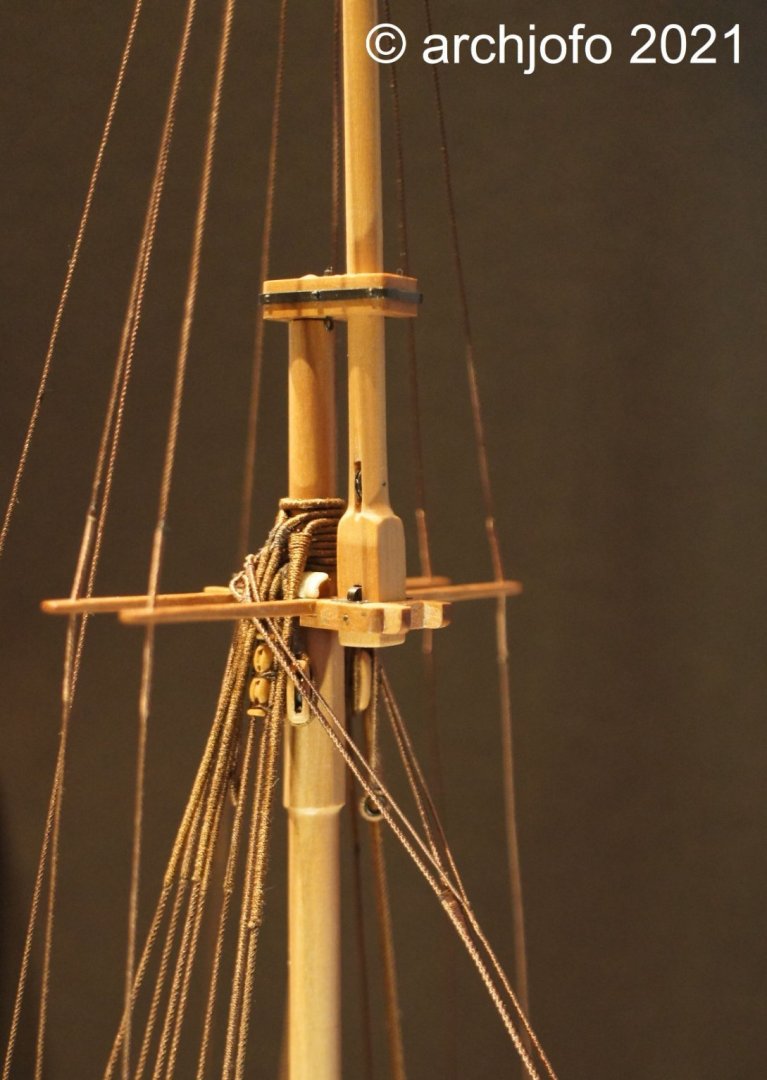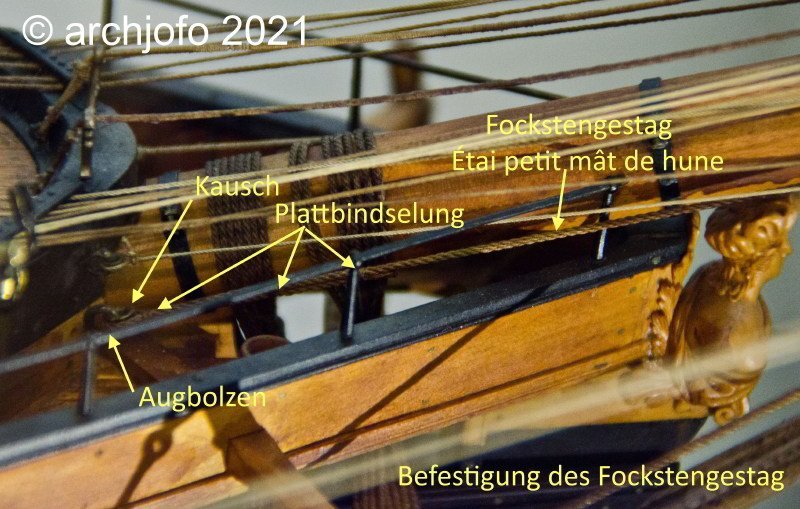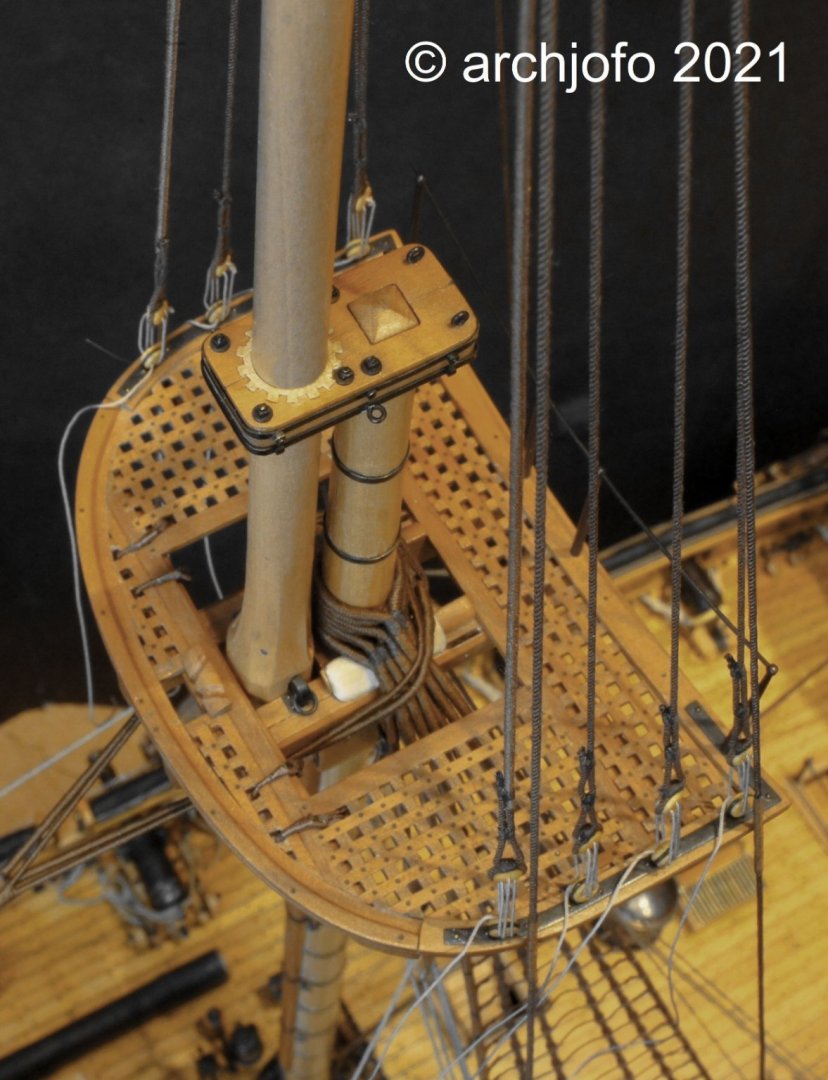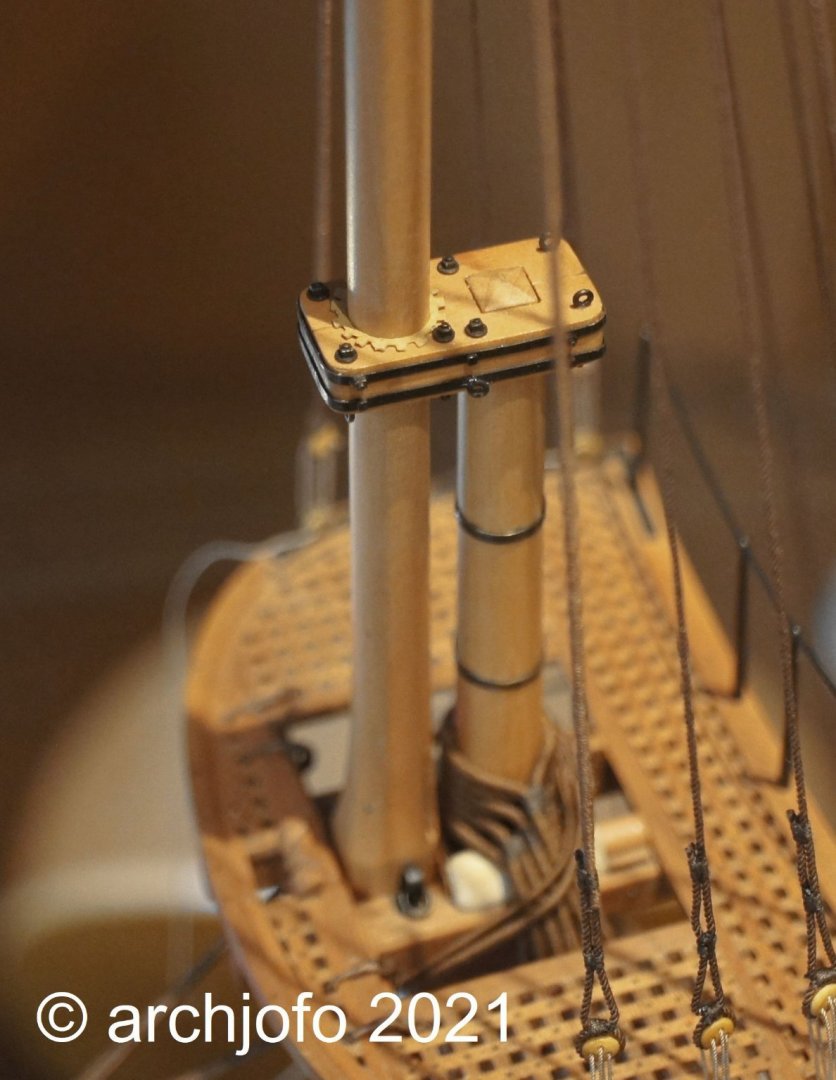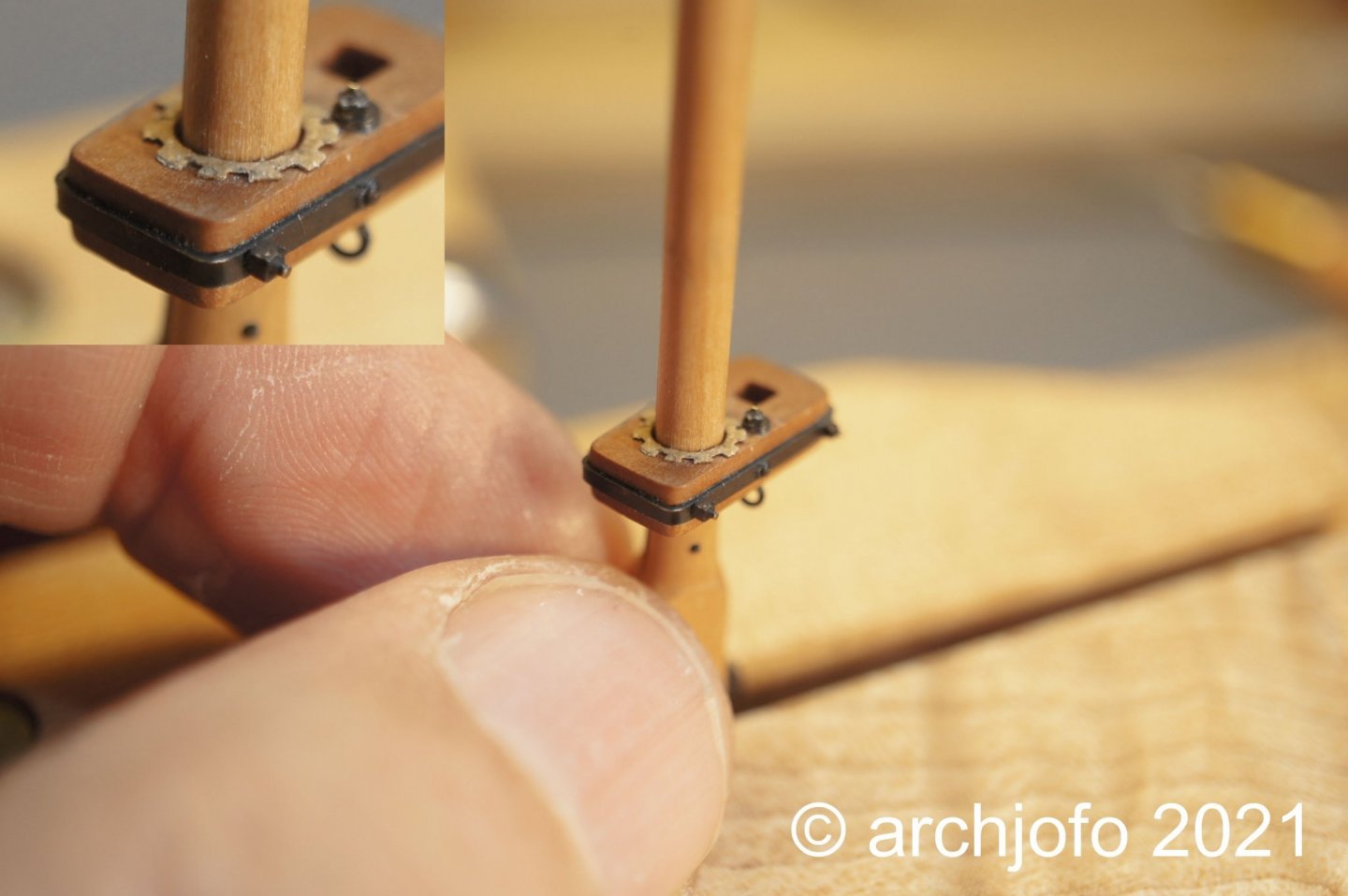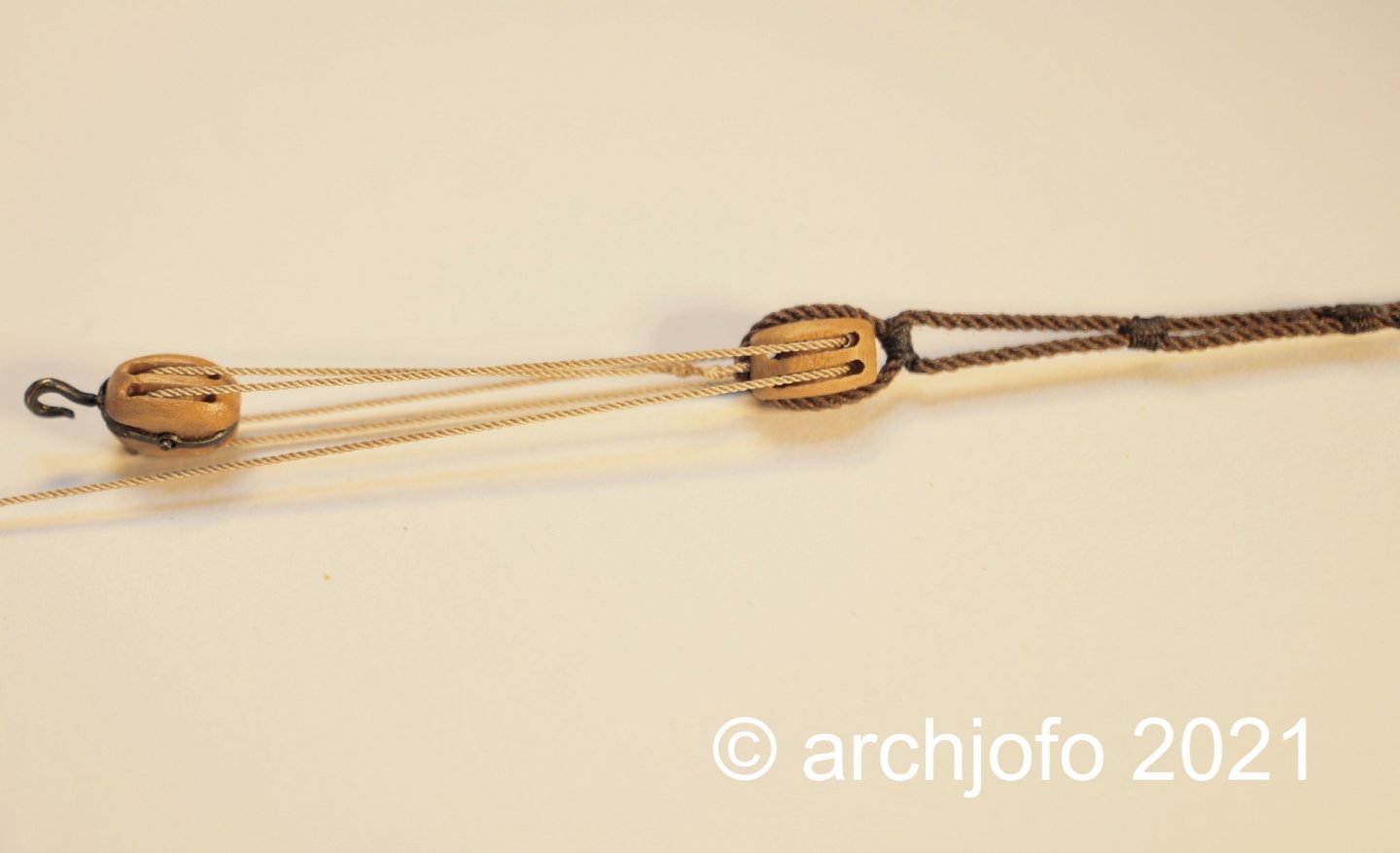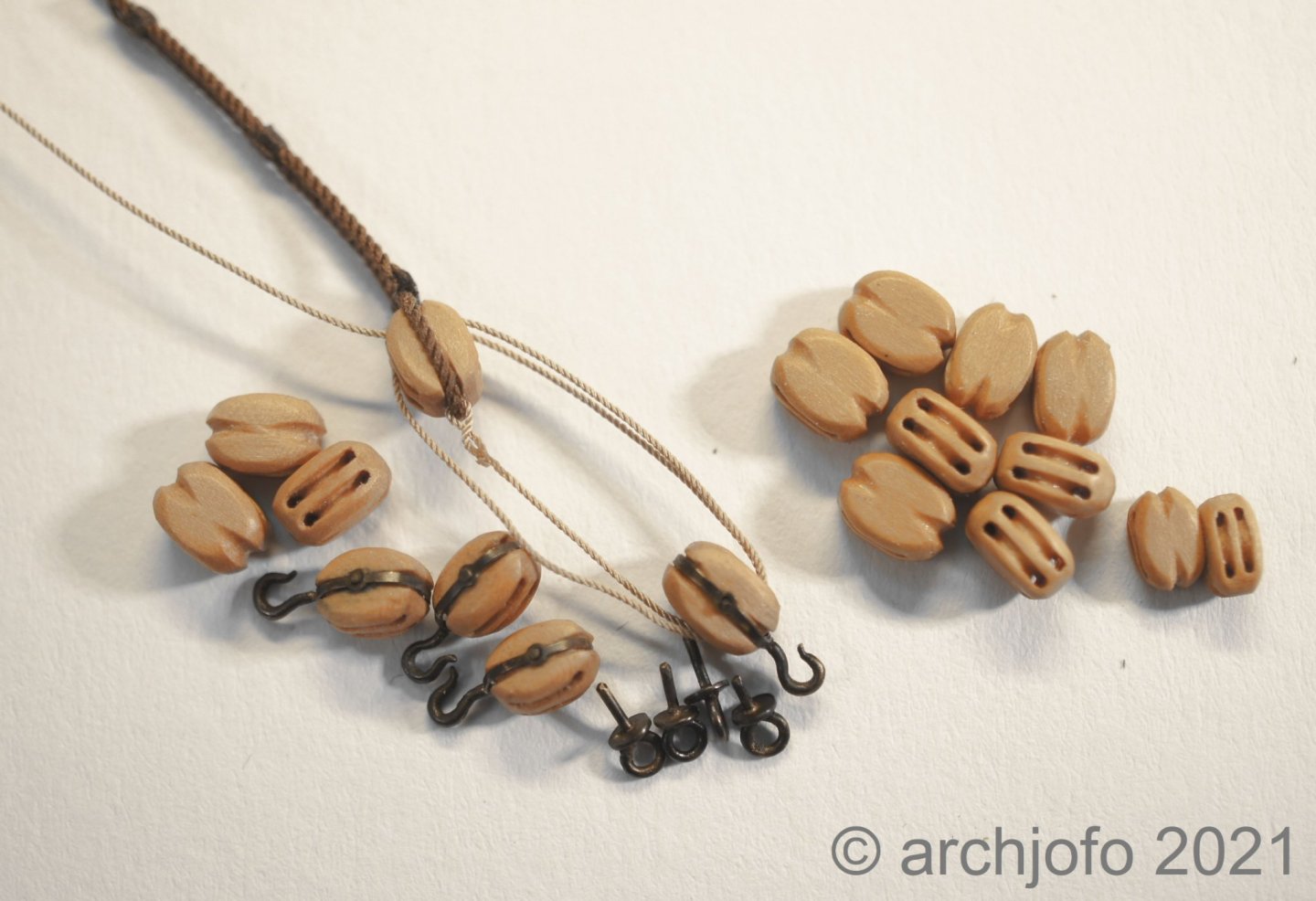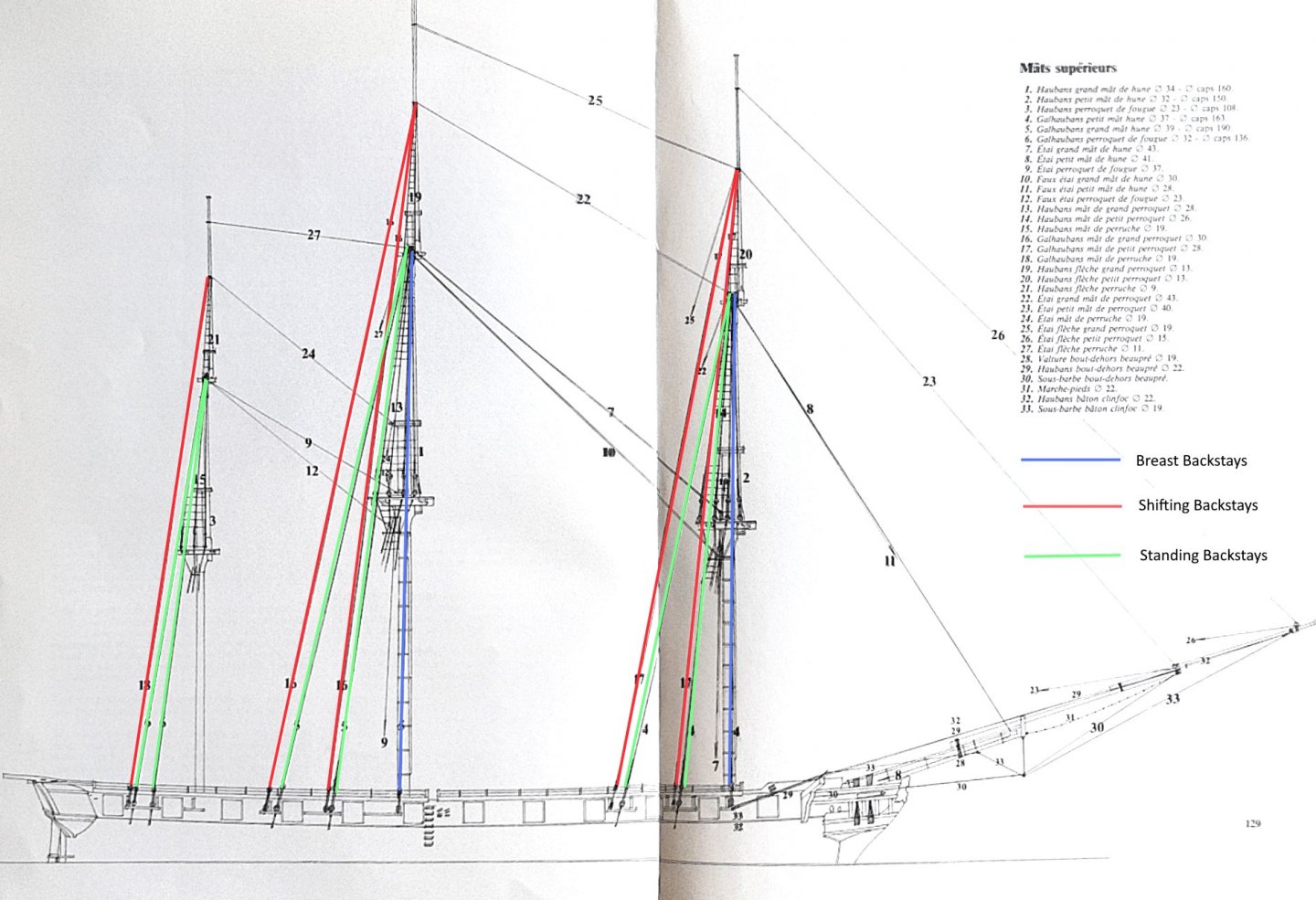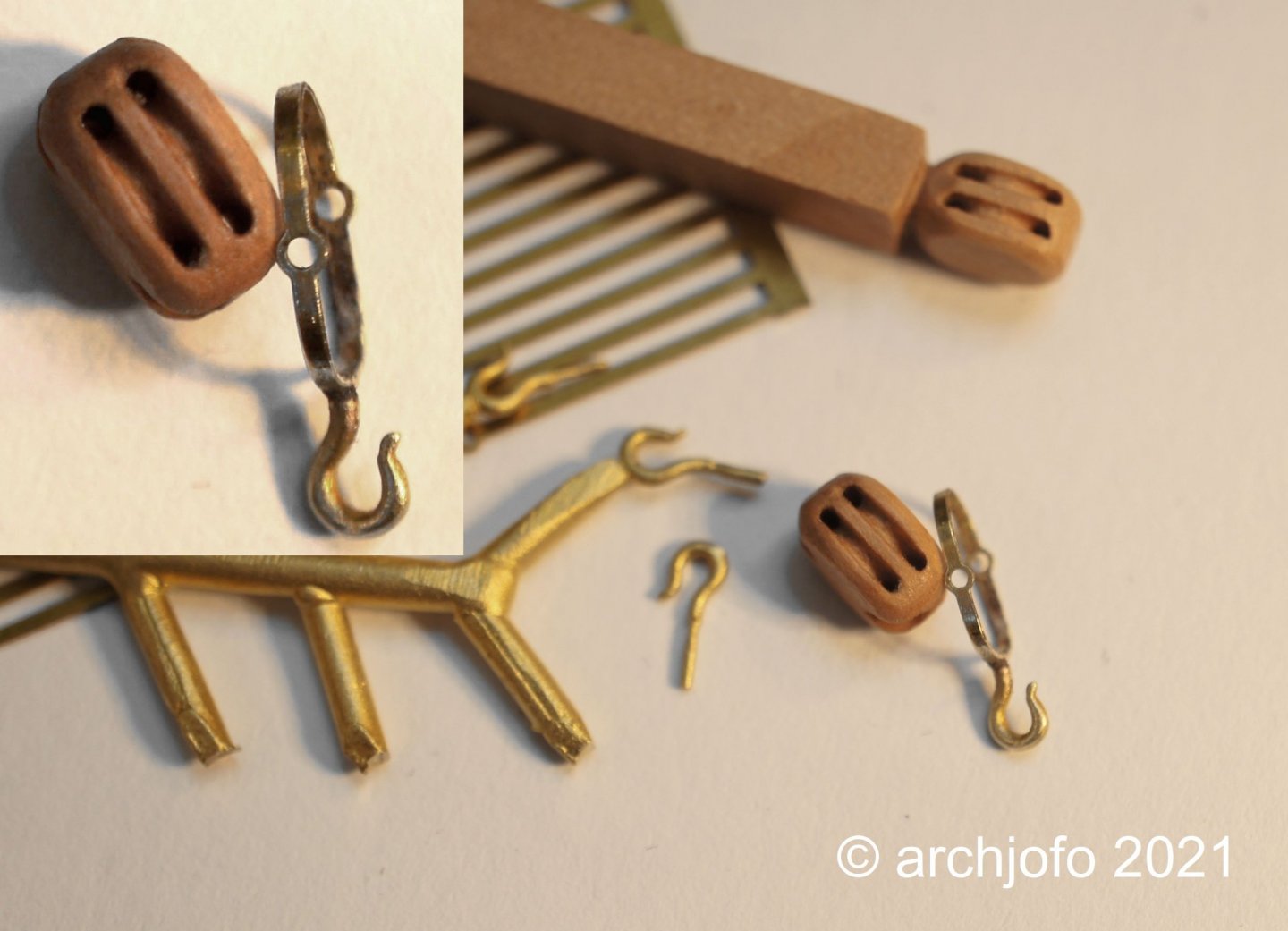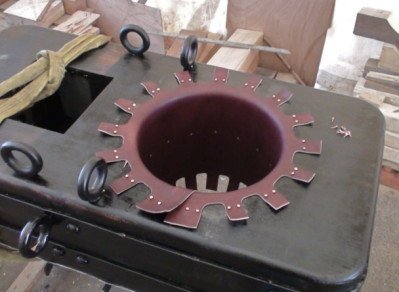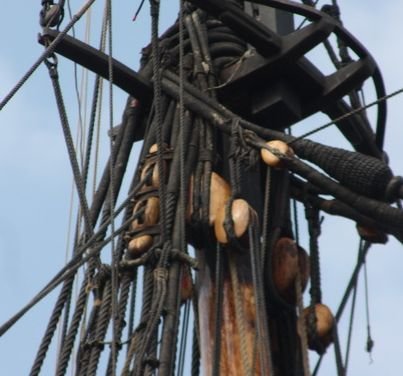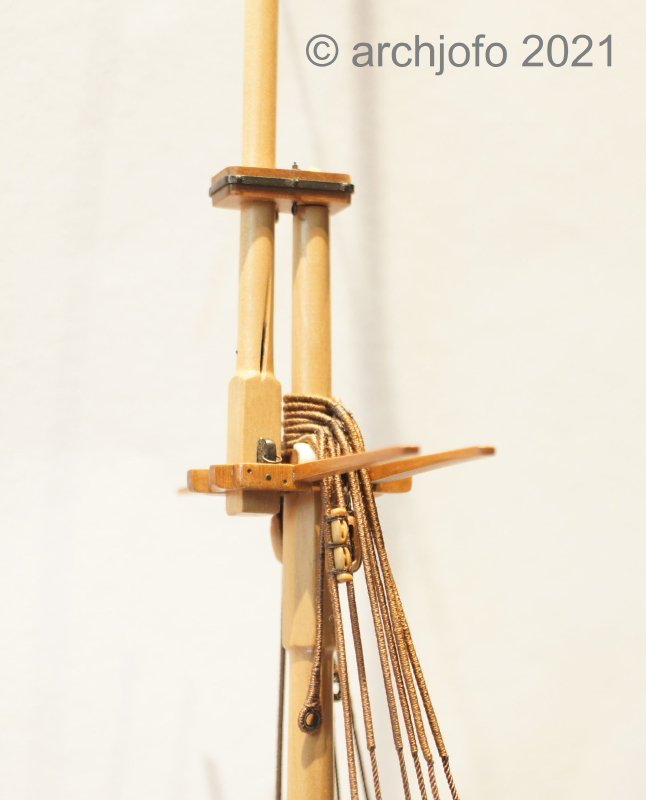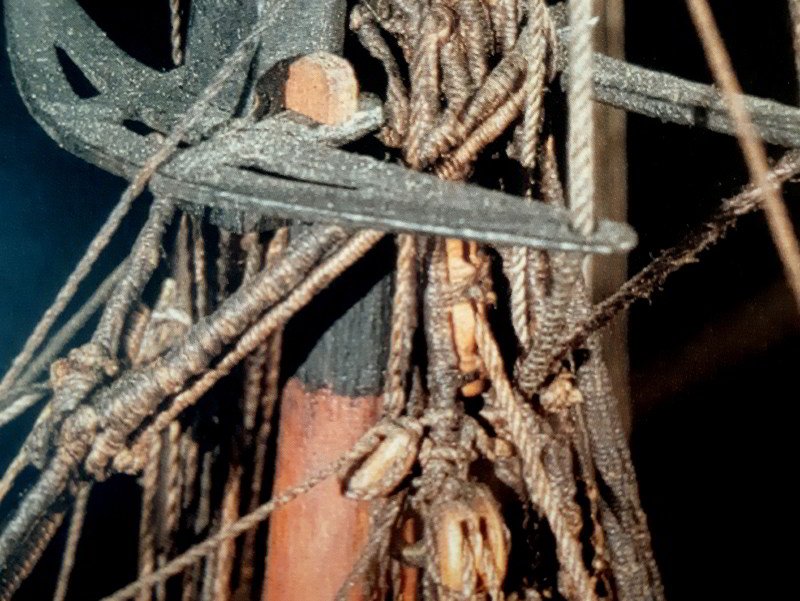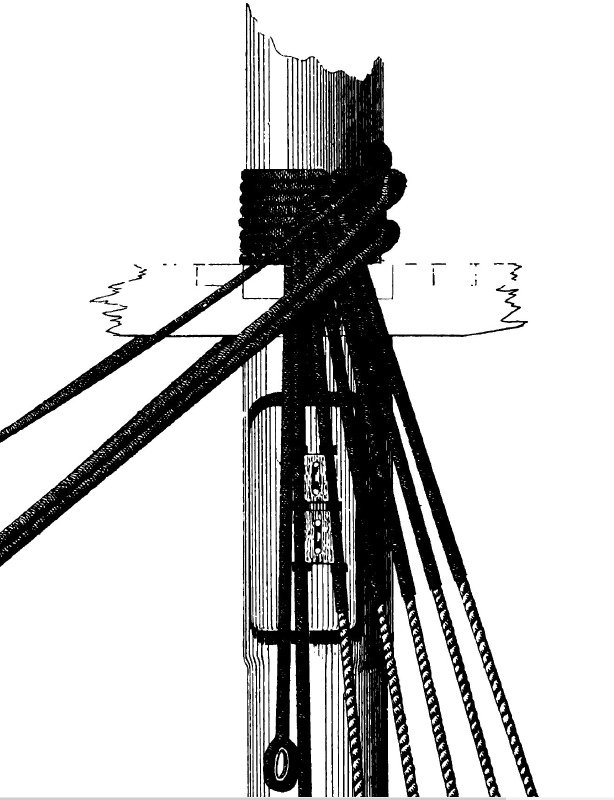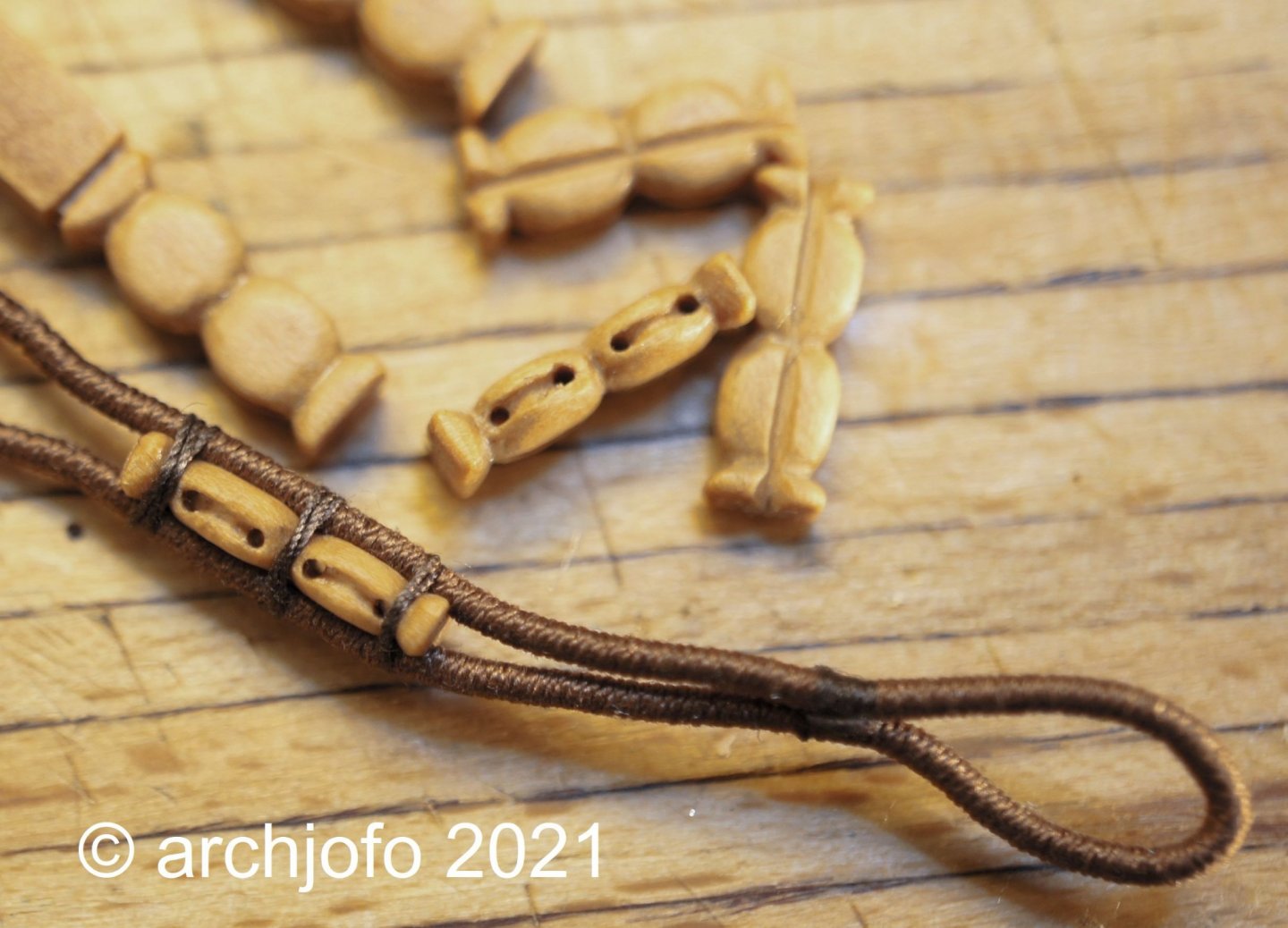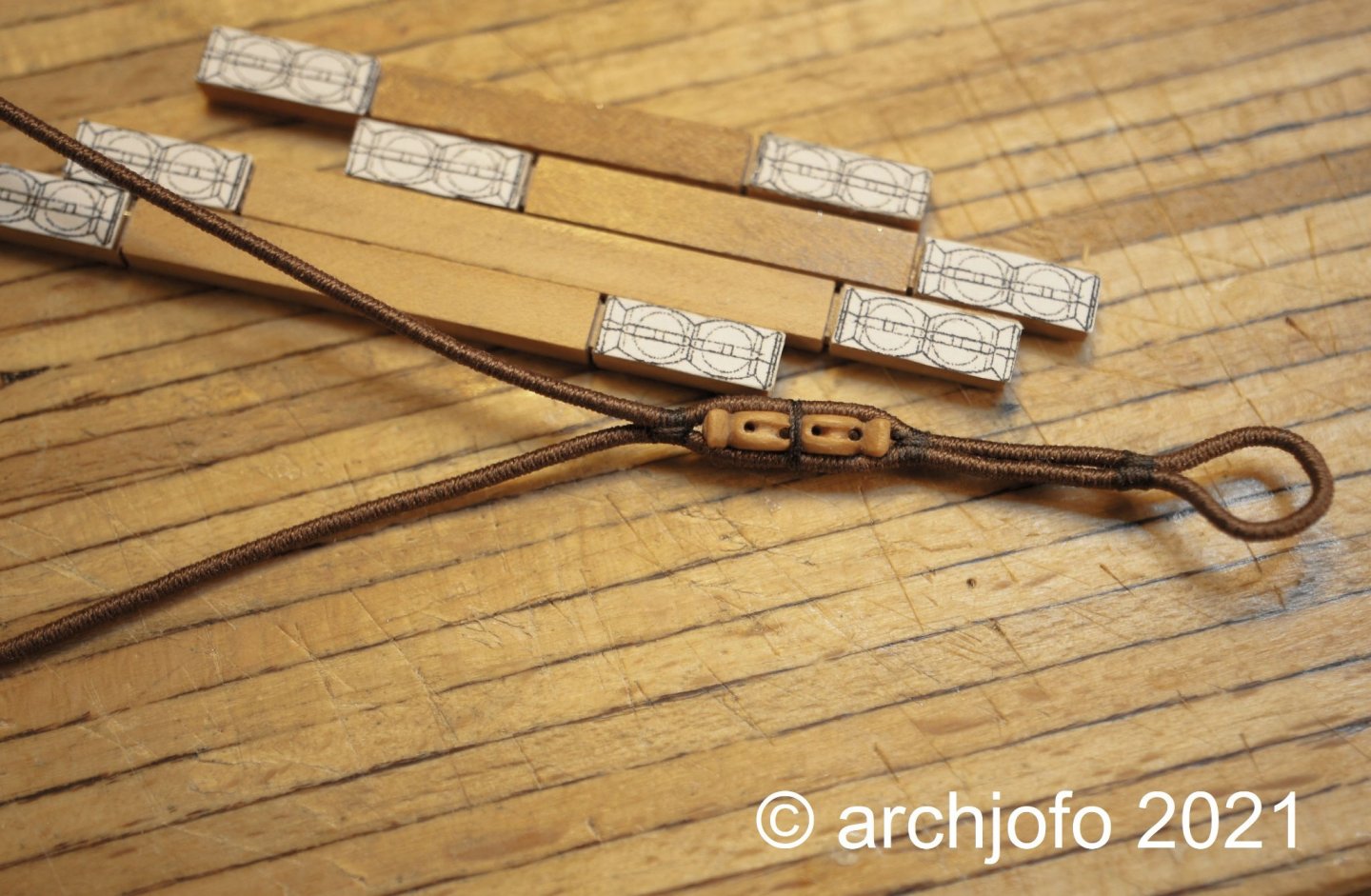-
Posts
1,495 -
Joined
-
Last visited
Content Type
Profiles
Forums
Gallery
Events
Everything posted by archjofo
-
@Chuck @mbp521 Hello Chuck, hello Brian, thank you for your positive comments and to all the others for the LIKES. Continuation: Rigging work - height-adjustable work platform Today I would like to say a few words about the design of the working platform as part of the further rigging work for my French corvette. Who doesn't try to design the working environment in such a way that one can work effectively and especially ergonomically advantageous. I have therefore followed with great interest the discussions that have taken place from time to time on this subject in various forums. Especially when working on the rigging of a 1:48 scale model, one feels the need to adjust the height of the working area continuously, depending on the area of the rigging in which one is working. Adjusting the seat height or working on the model standing up has its limits. It is of course more obvious to raise or lower the model (actually even more important). As I plan to complete the difficult weaving of the shrouds in the near future, and also with a view to the further rigging work on the current property, I thought about how I could realise a stepless height adjustment of the model for my needs. Inspired by the restoration workshop of the Musée national de la Marine in Paris, where scissor lift tables are used as working platforms for the ship models, I searched the net specifically for a similar solution. The work platforms used by the Paris museum cost up to several thousand euros, which of course was out of the question for me. Source: Musée national de la Marine in Paris After some time I found what I was looking for and bought a mini scissor lift table for relatively little money, as can be seen in the following pictures: The minimum height is about 35 cm, and the working platform can be raised or lowered continuously by foot pedal to about 87 cm with a small hydraulic cylinder. This height difference is more than sufficient for my purposes, as is the load capacity with 150 kg. See you soon ...
-
@shipman Thank you very much for the appreciation, and all ohters für the LIKES. With unwavering perseverance and joy, here we go: Continuation: Main topgallant stay - Étai grand mât de perroquet Analogous to the mizzen topgallant stay, the main topgallant stay (ø 0.58 mm in 1:48 scale) is made and fixed, but it is not guided to the main top by a single block, but by a guide collar with integrated thimble. The guide collar, consisting of a leg strop (ø 0.35 mm in model scale 1:48) with eye splices at the ends, was completely served. The following picture shows the serving machine with the finished stropp, into which the thimble was subsequently bound. The next picture shows the finished arrangement of the main topgallant stay. The leading collar is attached with a lashing around the main topgallant mast. Before I could attach the main topgallant stay to the model, however, a small area had to be served where the lead-through is through the thimble of the guide collar. The main topgallant stay did not need this serving, because it was led through a block disk and therefore there was less danger of falling into the pubic. Source: Atlas du Génie Maritime, Annexe Pl. 1 Finally, the lashing was made and the main topgallant stay was fixed to the two-legged strop in the top. See you soon
-
Hello, I am very happy about the extremely nice comments from all of you and the many LIKES. That of course motivates me a lot and gives me the feeling of being part of a really great community that pursues the same interests. Thanks again for that. Continuation: Mizzen topgallant stay - Étai mât de perruche As already reported on this topic some time ago (LINK), the monograph by J. Boudriot does not reveal in detail how the mizzen topgallant stay was attached. In this respect, I orientated myself on examples from relevant literature. Before attaching the stay (model rope ø 0.46 mm), its length must be determined on the model, as it is guided over a single block (length 4 mm) and integrating the thimble on the model is not necessarily recommended. The next picture shows the finished mizzen topgallant stay and the two-legged sling (counterpart for the lanyard lashing), which is attached to the trestle trees. The lanyard for the lashing to fix the mizzen topgallant stay was set up with a simplified splice or fake splice (unfortunately I don't know the English name). In the last picture you can see the finished lanyard lashing. A corresponding enlargement in the cut-out at the top left. Sequel follows …
-

Brig Le FAVORI 1806 by KORTES - 1:55
archjofo replied to KORTES's topic in - Build logs for subjects built 1801 - 1850
Hello, a solidly built hull is the best condition for a wonderful model. And it certainly will be! -
@bdgiantman2 Hi there, I am happy to comply with your request. Of course, the model looks a little messy in this condition. Besides, I'm not a professional photographer. I will soon get myself a real background for taking photos so that I can bring the whole model onto the picture. I hope that you like the pictures so far.
-
Hello, I have not yet come to the assembly of the mizzen topmast preventer stay and main mast preventer stay. I still have to finish these steps and will of course report on them. At the moment I am dealing with the detail clarification for the following stays: Mizzen topgallant stay and main topgallant stay - Étai mât de perruche et Étai grand mât de perroquet The mizzen topgallant stay of La Créole had a diameter of 22 mm, the main topgallant stay 28 mm (recalculated according to G. Lacroix method). Source: Atlas du Génie Maritime, Annexe Pl. 1 These stays did not have open eyes like the top mast stays (Fig. 1). The collar was spliced directly to the stay (Fig. 2) and served accordingly. Based on the illustration in the atlas (1860), I assume that these stays, also due to their small diameters, were made as hawser laid rope. Unfortunately, I did not find corresponding information in the monograph on La Créole, also not regarding the continuations and fixations on the respective tops. Also on the picture material available to me I cannot see any indications in this respect. Only to the mizzen topgallant stay I have read in the monograph that this is led down to Mars via a single block, which was attached to the mast cap. About the attachment of the stay again nothing concrete can be taken from the description. Therefore a few questions arise in this connection, which I try to bring to a clarification. In addition first the following representation for the overview of these two stays: Source: Monograph "La Creole" by J. Boudriot, p. 129 My research gave, as shown graphically above, from my point of view a conceivable fixing possibility for these stays (numbers of the overview assigned) on the respective crosstrees. In my opinion, the main topgallant stay could be forwarded by means of a collar (number 3) with a thimble. To what extent this way of fixing and forwarding the stays for the La Créole is historically correct, I could not find out. Therefore I would be grateful for any hints and your valued opinion. See you soon ...
-
Hello, here it goes on after a small creative break: In the meantime I have made the ropes for the main topmast preventer stay (Ø 0.63 mm) and mizzen topmast preventer stay (Ø 0.50 mm). In principle, these are attached as shown in the following sketch. Source: Internet unknown This method of attachment was described in the monograph by J. Boudriot. I hope that I have interpreted it correctly. Accordingly, the collars were prepared with thimbles. At the corresponding places the stays are served. Shortly I will show how they are then mounted on the model.
-
Hello Doris, to conclude your wonderful model I would like to express again that I admire your way of model building very much. The Royal Katherine is a model ship of the highest level. Congratulations on the magnificent model and I hope that you will not let us wait too long with a new project. Or does it already exist and I missed it?
- 1,035 replies
-
- royal katherine
- ship of the line
-
(and 1 more)
Tagged with:
-
Ratlines for the topmast shrouds The topmast shrouds were thinner than the lower shrouds (comparison on the model: Fore mast shrouds ø 1.08 mm / fore topmast shrouds ø 0.66 mm), their ratlines are also to be made with smaller diameters in proportion, which is the result of earlier research. Some time ago, I tried to clarify whether the required eye splices could be made with a thickness of ø 0.25 mm. For this purpose I made a splicing tool with a smaller diameter ø 0.8 mm, as shown in the next picture. The fake splice (2x sticking through) with a dew thickness of ø 0.25 mm was already quite successful at that time. In the following picture you can see the comparison of the ratlines thickness again.I don't like the simpler alternative version with knots, because it is too thick and doesn't correspond to the original version. In the meantime I have found the time and muse to make these filigree ratlines with the fake splice directly on the model. It has to be said that this is an extremely difficult job, but it can be done. In my opinion, the result speaks for itself. In this respect it is worth the effort. But now we will continue with mizzen topmast stay. I still have to find out how it was attached. I would be very grateful for any information. See you soon ...
-
@jdbondy Many thanks ! In the meantime, the rope for the mizzen topmast stay was made from fine silk yarn, three strands are laid up right handed to form a hawser laid rope with ø 0.77 mm in model scale, which corresponds to ø 37 mm in the original. A guide collar was also made, as for the main topmast stay, to guide it down along the mast for attachment. As already mentioned for the main topmast stay, this detail needed further clarification, which has now been done. Behind both the foremast and the mainmast was a set of guide blocks, which were carried on an iron rod. The respective stay was attached in the middle to this iron rod, which was fastened to the deck with three holders.For this purpose, the iron rod was inserted through the thimbles tied into the stays. Here you can see the binding of a thimble: The following three pictures show the mizzen topmast stay from the top to the attachment point: The following are three pictures of the main topmast stay from the top to the attachment point at the guide blocks: To be continued ...
-
@Jeronimo Hi Karl, many thanks for the nice comment. Main topmast stay - Étai grand mât de hune The main topmast stay of the La Créole had a diameter of 43 mm, which corresponds to a diameter of 0.89 mm in model scale 1:48. I made the corresponding rope from the finest Japanese silk yarn from Yli; 4 x 3 righthanded, and then these 3 strands were laid to the left to form a cable. The next picture shows the main topmast stay with the open stay eye and the eyes spliced into the legs. Next to it is the prepared guide collar with thimble, which is placed around the masthead and then lashed down. The main topmast stay is led through the thimble in the guide collar down to the deck and fastened there. I still have to finalise this detail. To be continued ...
-
@Jorge Diaz O Hello, I am particularly pleased with your last post. I would like to thank you very much for that. Hello, and here it goes on: Fore topgallant stay - Étai petit mât de perroquet In preparing to make the fore topgallant stay, the following question needs clarification and I hope for your expert assistance to clarify it: In the monograph for La Créole, a diameter of 40 mm is given for the fore topgallant stay, not only in the overview with rigging plan but also in the text. The fore topmast stay has a diameter of 41 mm. In this respect, the fore topgallant stay with a diameter of 40 mm seems to me to be much too thick. In my opinion, the stay should be be much thinner, perhaps around 19 mm in diameter. What do you think?
-
@GrandpaPhil @Gahm @allanyed Many thanks for the nice comments und all the others for the LIKES. Fore topmast stay - Étai petit mât de hune According to my announcement in the last post, I am dealing with the topmast stays. So I prepared the assembly for the fore topmast stay. According to my original assumption that a left-hand rope was used here, this is obviously not the case according to my current research. The stay had a diameter of 41 mm in the original, which corresponds to 0.85 mm in model scale. The fore topmast stay is attached in the same way as the main stay. This requires an open eye. The two legs are spliced into the stay. Finally, the ends receive spliced-in eyes, which then receive a lashing, as can be seen in the following picture. For comparison, I have laid a rope next to it that corresponds to the mainstay. The fore topmast stay was routed on the starboard side of the bowsprit top via stay sheave to the bow for fastening by means of thimble and eyebolt. The area of the stay that was led around the sheave was served. Source: Atlas du Génie Maritime Source: Original model in the Musée de la Marine Paris The lashings for the fore topmast stay have to be applied directly to the model, as it is then no longer possible to pass the rope through the sheave cleat. The next picture shows the eyebolt with thimble of the stay attachment on the forecastle. Here you can see the guidance of the stage over the side sheaves with the served areas. The last picture shows the fore topmast stay on the topmast crosstrees. To be continued ...
-
@mbp521 Hi Brian, thank you for your nice comment and thank you to all the others for the many LIKES. Here is the continuation of my report: I imitated the leather lining of the caps accordingly.I use real leather with a thickness of approximately 0.25 mm. I split the thinnest leather I could buy with my own device.
-
@Jorge Diaz O @Hubac's Historian @Gahm @md1400cs @Roger Pellett @albert Hello, there still seems to be interest in my construction report. Thank you for your nice comments and also for the many LIKES. I am very happy about that and it gives me further motivation for the next sections. I would like to express my sincere thanks for this. But let's continue here. I was able to finish the double blocks for the breast backstays in the meantime. And here is an overview of the back stays of the La Créole: The Shifting Backstays are already in preparation. More about that soon.
-
@Roger Pellett Hi Roger, you do not need to apologise for your interest in my construction report. I am therefore happy to answer your question. I had the castings made by a jewellery foundry in Germany. I made the master patterns from brass myself. These were then cast from brass using the lost wax process. If you have any further questions, please do not hesitate to contact me.
-
Hello, La Créole also had breast-backstays and had them on the mainmast and foremast. I am currently making the double blocks (length 6 mm) for the tackles. These will be hooked into an eyebolt on the channel. Here is an attempt to show the leather lining of the hole in the cap. Here I show an example from the L'Hermione.
-
@Gahm Hello, Thomas, many, many thanks for your kind comment. Thank you also to all the others for the many LIKES. Such a response always makes us happy and gives us motivation to continue. Today I would like to report briefly on a small mishap. I thought that I could attach the sister blocks for the topmast shrouds directly to the model. Of course, this does not work. Good thing I haven't tied the lanyards yet. So I will have to remove the topmast shrouds again. Before I do that, I made a prototype for a sister block to see how they will be attached. Source: Atlas du Génie Maritime The one hole is drilled too far in the middle. I will do better than that.
About us
Modelshipworld - Advancing Ship Modeling through Research
SSL Secured
Your security is important for us so this Website is SSL-Secured
NRG Mailing Address
Nautical Research Guild
237 South Lincoln Street
Westmont IL, 60559-1917
Model Ship World ® and the MSW logo are Registered Trademarks, and belong to the Nautical Research Guild (United States Patent and Trademark Office: No. 6,929,264 & No. 6,929,274, registered Dec. 20, 2022)
Helpful Links
About the NRG
If you enjoy building ship models that are historically accurate as well as beautiful, then The Nautical Research Guild (NRG) is just right for you.
The Guild is a non-profit educational organization whose mission is to “Advance Ship Modeling Through Research”. We provide support to our members in their efforts to raise the quality of their model ships.
The Nautical Research Guild has published our world-renowned quarterly magazine, The Nautical Research Journal, since 1955. The pages of the Journal are full of articles by accomplished ship modelers who show you how they create those exquisite details on their models, and by maritime historians who show you the correct details to build. The Journal is available in both print and digital editions. Go to the NRG web site (www.thenrg.org) to download a complimentary digital copy of the Journal. The NRG also publishes plan sets, books and compilations of back issues of the Journal and the former Ships in Scale and Model Ship Builder magazines.


